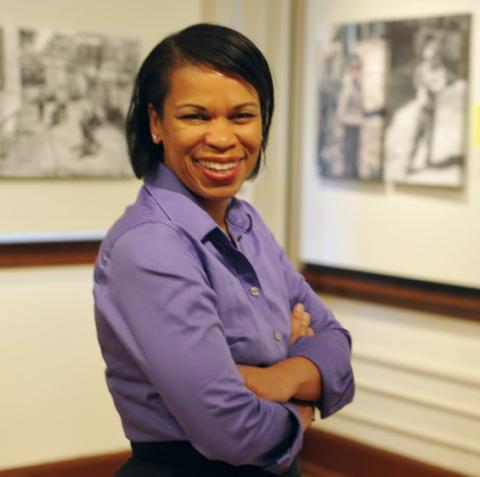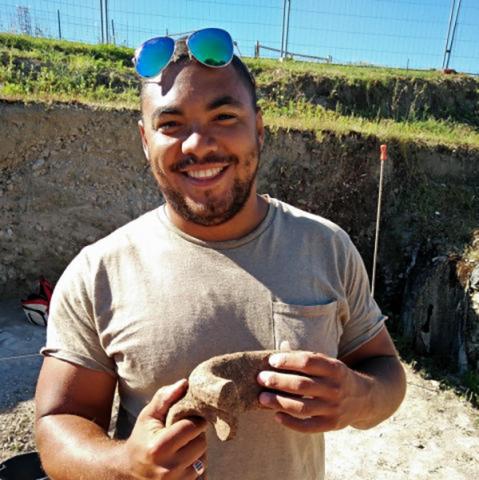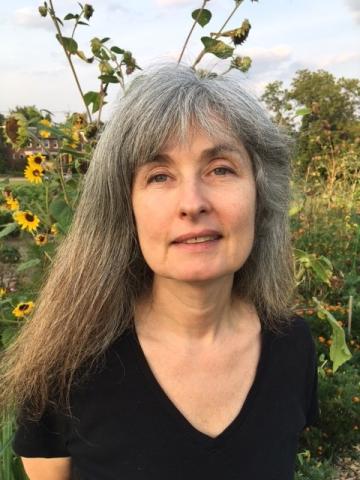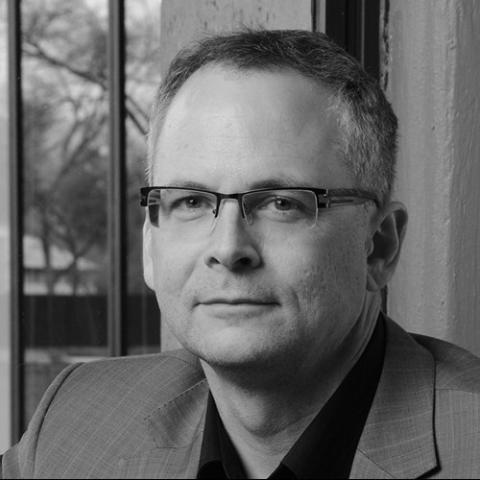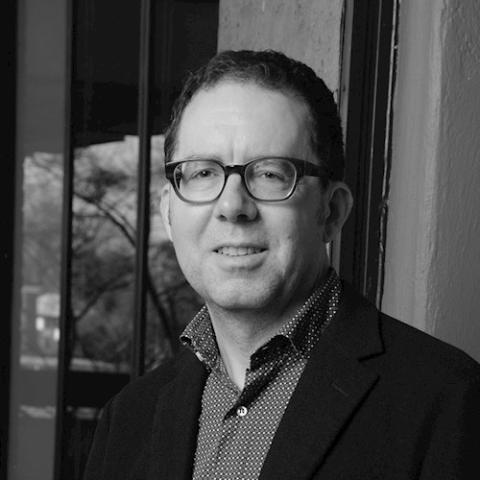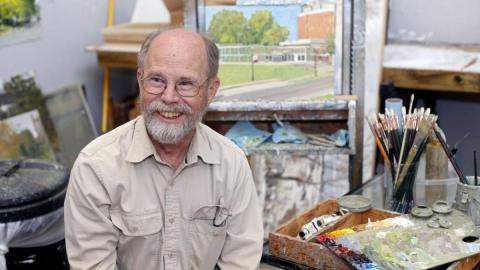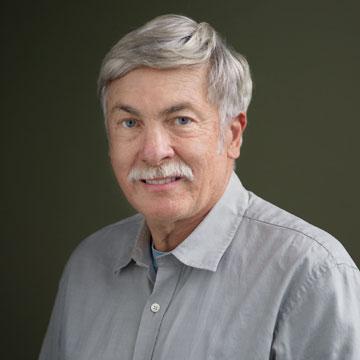Madeleine Mae Morris
Visiting Professor, Photography
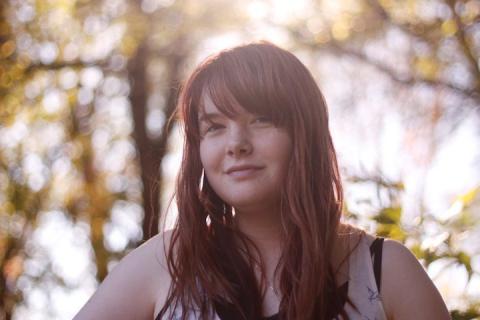 Email
EmailMadeleine Mae Morris was born in New York City in the year 1992, and soon after was dragged kicking and screaming Upstate to a tiny village called Homer. She attended Rochester Institute of Technology and Bennington College, specializing in Fine Art Photography, and received her BFA in 2015. In 2023, she received an MFA in Photography + Film at Virginia Commonwealth University and was awarded the Postgraduate Teaching Fellowship at VCU the following year. Madeleine continues to expand her interdisciplinary practice, interweaving her work in photography, filmmaking, glassblowing, craft, painting, and bookmaking -- focusing on themes of memory, loss, temporality, and their inherent contradictions. Her work has been shown nationally and internationally, most recently in Richmond, London, and Tromsø.
Liza Wimbish
PhD Student
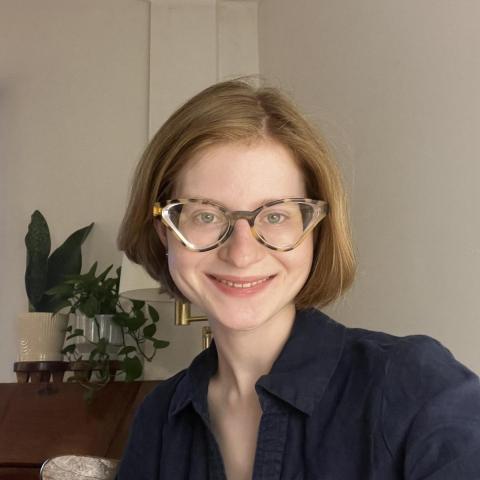 Email
EmailLiza Wimbish (she/her) is a doctoral student studying modern and contemporary art. She is interested in researching the intersections of art history and the field of disability studies, with a particular focus on neurodivergence. Wimbish earned her Bachelor of Arts degree in art history and studio art from the University of Virginia.
Nathan Rubinfeld
PhD Student
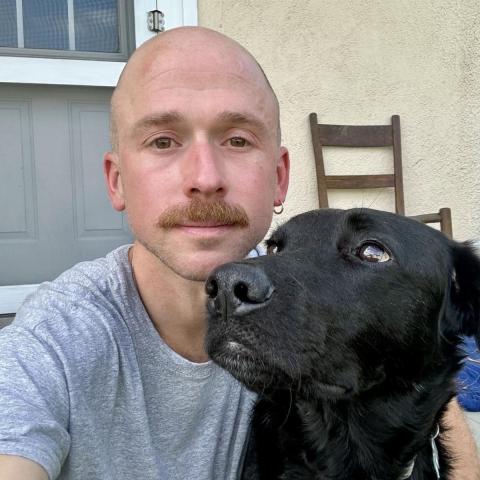
Nathan Rubinfeld (they/them) — and Rosie — were born and raised in Santa Fe, New Mexico. They received their M.A. in 2014 from the University of Chicago where they studied with Prof. Bill Brown. Their thesis, ‘Pasting-Up the Queer Body: Jess’s Post-Victorian Aesthetic,’ examines the assemblage work of Jess and his (dis)articulations of the queer male body in relation to the feminine and domestic practice of Victorian album-making. In addition to their M.A. they hold a B.A. from Hampshire College, where they studied Studio Arts and Art History, producing both an exhibition and written thesis. The latter examined Lee Miller’s photographic documentation of Dachau and Buchenwald in relation to Bataille’s conception of taboo and transgression and the Kristevan abject.
Their study with Prof. Getsy is a continuation of the work begun in their M.A., investigating queer materialities, the construction of identity, and the intersections and divergences of assemblage as a medium in the plastic arts and as a conceptual framework within critical theory.
When not reading or on grounds, they (and Rosie) can be found running the many local trails.
Claude Mohr
PhD Student
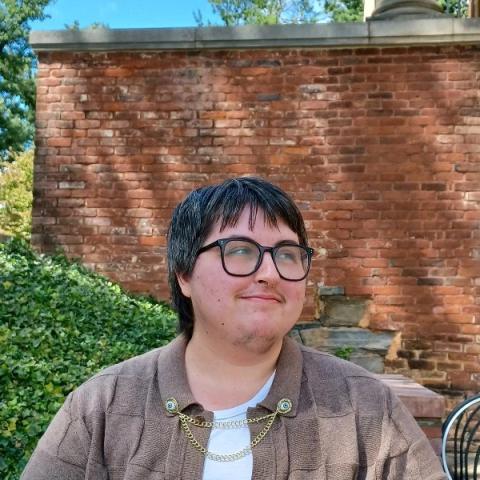 Email
EmailClaude Mohr (he/they) is a first-year PhD student in the Art and Architectural History program studying under Dr. David Getsy. Currently, his research concerns gender, sexuality, and early twentieth-century avant-gardes, focusing in particular on the intersections of transgender studies and Surrealism.
In 2024, Claude received his M.A. in Art History from the University of Florida. His thesis, "Transgender Studies and the Uncanny Object in Surrealism, 1924–1970," reevaluated a central element of Surrealist visual production, the uncanny, in terms of its relationship to gender’s mutability in the oeuvres of Hans Bellmer, Claude Cahun, and Toyen. Claude also holds a B.A. in Philosophy from Grinnell College in Iowa, where he undertook a Mentored Advanced Project on the relationship between sexuality and space in the films of David Cronenberg.
In addition, Claude has curated two exhibitions at the University of Florida: On View: José Gabriel Fernández, A Brief History of Drawing at the Gary R. Libby Focus Gallery and Surrealism at the Harn: A Centennial Celebration at the Harn Museum of Art (co-curated with Dr. Rachel Silveri and graduate students from the Department of Art History.)
Jieun Kim
PhD Student
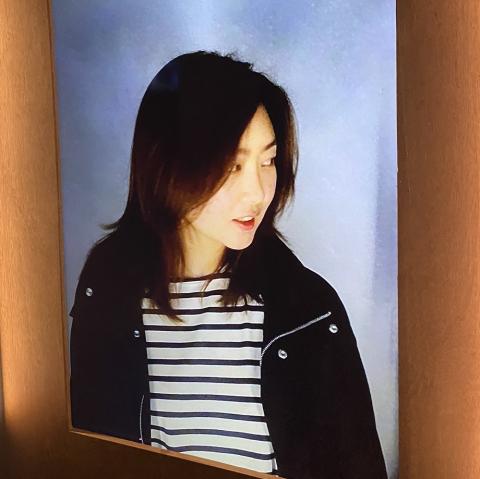 Email
EmailJieun Kim is a Ph.D. student in the Art and Architectural History program studying with Professor Dorothy Wong. Her research interests revolve around medieval Chinese and East Asian Buddhist art, particularly focusing on rock carvings and cave temples. Before enrolling at the University of Virginia, she earned her MA in Art History from Hongik University in Seoul, Republic of Korea. The master’s thesis, titled “A Study on the Liu Benzun Sect Sculptures of Sichuan in the Song Dynasty-Focusing on the Images of Liu Benzun,” reexamines the creation of unprecedented images of Liu and Vairocana Buddha to shed light on their religious functions and meanings.
Barriane Franks
PhD Student
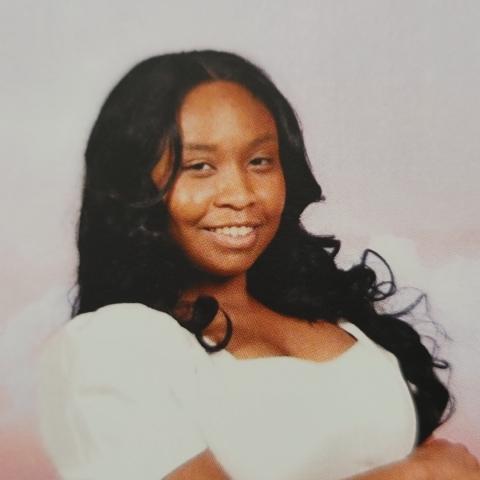 Personal Website
Email
Personal Website
EmailBarriane Franks is a graduate of Xavier University of Louisiana (B.A. in Art), Columbia University (M.A. in Art History), and is currently enrolled as a Ph.D. student in the Art & Architectural History department at the University of Virginia.
Barriane's passion for the Arts of the Italian Renaissance was sparked early on through her visual arts training, thereby, leading to her current research interests on cross-cultural connections between the African continent and Italy through trade, travel, and other communications as evidenced through the artistic depictions of African people in Italian Renaissance art. She first examined this topic in her preliminary work, "The De-Evolution of African Depiction in Arts of the Italian Renaissance," funded by Xavier University of Louisiana, her undergraduate institution's, GRADStar research grant and currently in consideration for XULANexus journal. This research led to her acceptance to Columbia University, and she will continue to expound on her research interests and augment her work throughout her doctoral studies at the University of Virginia.
Prior to her enrollment, Barriane engaged in a plethora of academic and museum internships and programs including curatorial internships at the New Orleans Museum of Art (NOMA) and co-curated the "With Her Hands: Women's Fiber Art from Gapuwiyak The Louise Hamby Gift" exhibition at the Kluge-Ruhe Art Collection of the University of Virginia (UVA), with research from the latter, “Crafting Culture: The Spiritual and Secular Nature of Yolŋu Necklaces,” being presented at The Leadership Alliance National Symposium in Hartford, CT and published in the exhibition catalog. She has also presented at Baton Rouge Community College Art Fair in Baton Rouge, Louisiana and The National Association of African Studies and Affiliates Convention in Dallas, Texas. Furthermore, she has participated in various internships focused on visual art and art history including those with the Alliance of HBCU Museums and Galleries, through discussions with professionals in art fields such as conservation, art history, curation, and more facilitated by universities such as the Bard Graduate Center, Fisk University, Tuskegee University, the University of Delaware/Winterthur, Princeton University, and Yale University as well as some arts institutions including LACMA, the Georgia O’Keeffe Museum, and the Metropolitan Museum of Art.
While at Columbia, she was awarded two fellowships towards her thesis research– in Summer 2022, she was an HBCU Fellow at the Bard Graduate Center, allowing her access to their extensive collections on historical costume, and she was selected as the 2022–23 Casa Muraro Graduate Research Fellow by Columbia University’s GSAS to conduct on-site research in Venice, Italy. In Spring 2023, she served as a curatorial intern at the Metropolitan Museum of Art in the Robert Lehman Collection, conducting provenance research for the “Hidden Faces" exhibition which debuted in Spring 2024.
A scholar-artist, her passion for research is matched by her artistic fervor with several pieces in her acclaimed “Social Injustice Series” having won several awards and been displayed nationally at museums and galleries such as the Ogden Museum of Southern Art, Purdue University, School of the Art Institute of Chicago, Kelwood Contemporary Art, Alabama State University Civil Rights Museum, Ashé Powerhouse Theater, and 5 Press Gallery. She has had two public solo exhibitions at Xavier University of Louisiana, with three works bought by and currently on display at the university center and college dorm respectively. As she pursues her scholarly endeavors, Barriane eagerly anticipates increasing her art historical knowledge and hopes to contribute to the budding field of Africans in the Italian Renaissance to potentially reveal answers to historically hidden narratives.
Slenka Botello Gil
PhD Student
 Email
EmailSlenka Botello is a first-year PhD student in the Department of Art and Architectural History. Originally from Colombia, she joins the program as a Fulbright Scholar, bringing with her a deep passion for exploring the intersections of art, culture, and history. She holds an M.A. in Art Studies from Ibero University in Mexico City and a BA in History from the National University of Colombia.
Her research interests focus on feminist art history in Latin America, and she is particularly interested in examining how the new narratives of feminist art are transforming art history and curatorial practice in Colombia. Her previous research experience has focused on the category of "monstrosity" to analyze European travelers' representations of indigenous South Americans from a decolonial perspective. She has also analyzed the place of demonic and sinful bodies in 18th-century Jesuit Mexican and Colombian art. With a background in art-based research and teaching art history to artists, as well as a deep love for DIY zine projects, Slenka is excited to contribute to the vibrant academic community in Charlottesville.
LaRissa Rogers
Assistant Professor, Sculpture
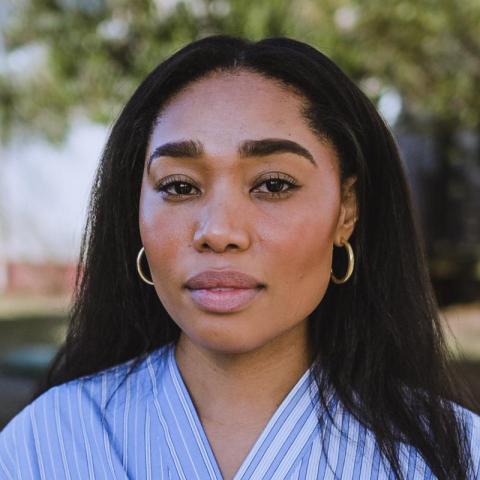 Personal Website
Email
Personal Website
EmailLaRissa Rogers’ practice combines aspects of personal memory and history to forefront the capaciousness of blackness shaped by the experience of diasporas. Research and material become the entry point of broader social political interrogations, often asking the question, who and what survives?
Rogers was named to the Forbes' 2024 “30 under 30” list in the Art and Style category. Rogers has exhibited at Documenta 15 (Germany), the Wattis Institute of Contemporary Art (California), the California Museum of Photography, the Virginia Museum of Contemporary Art, Los Angeles Contemporary Exhibitions, California State University, Fullerton, and the Fuller Craft Museum (Massachusetts).
She received the Visual Arts fellowship at the Virginia Museum of Fine Arts (2022) and the Fine Arts Work Center Fellowship (2023-2024). Rogers also held residencies at the BEMIS Center of Contemporary Art (2022) and the Skowhegan School of Painting and Sculpture (2024).
Rogers received her Master of Fine Arts from the University of California, Los Angeles, and her bachelor’s degree in fine arts from Virginia Commonwealth University.
Rogers is currently working on “Going to Ground,” a public sculpture commission at the Rose Kennedy Greenway, Boston. It is a site-specific installation interrogating the politics of home, mobility, arrival, sovereignty and freedom using soil as a conduit to conspire and speculatively engage with Zipporah Potter Atkins, the first-known Black woman to own a home in colonial Boston.
Rogers is a tenure track assistant professor and sculpture area head at the University of Virginia. She is currently represented by Super Dakota.
Robin Garcia
Assistant Professor
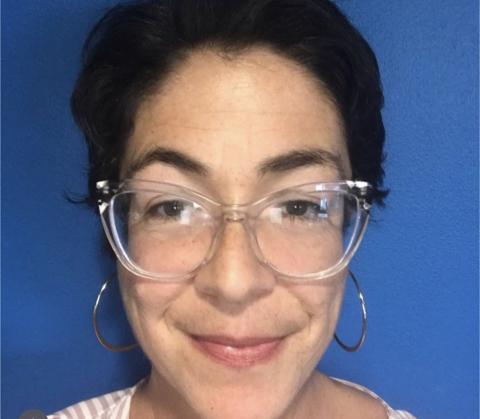 Email
EmailRobin Garcia is a Chicana born and raised in Los Angeles from a working-class family of organizers and artists. She completed her doctorate in Cultural Studies from Claremont Graduate University with a focus on Africana Studies, Media Studies, Latin American Studies and Globalization and Culture. Her dissertation: “Community and Cultural Collectives in Contemporary Venezuela,” looked at the role that community media and community museums, culture, performance, and activist collectives have played in recuperating popular versions of anti-colonial Venezuelan history. Her publications include “Decolonial History by/for Afro and Indigenous Venezuelans” in Hemispheric Blackness and the Exigencies of Accountability (University of Pittsburgh Press, 2022), edited by Jennifer Gómez Menjívar and Nicolás Ramos Flores, as well as “Who Owns the Archive? Community Media in Venezuela under Hugo Chavez” in Taking Risks: Feminist Activism and Research in the Americas (State University of New York Press, 2014) edited by Julie Shane.
Robin has taught courses across the Humanities curriculum at several Cal State campuses, Antioch University, Pitzer College, Pace University in New York, and the University of Ibadan in Ibadan, Nigeria. She was an evaluator and program manager while a ACLS/Mellon Fellow Public Fellow at the LA County Department of Arts and Culture working on the county's Cultural Equity and Inclusion Initiative. Between 2020 and 2022, Robin was the Community Arts and Culture Programs Co-Director for WE RISE, an initiative sponsored by the LA County Department of Mental Health that supports grassroots programming at the intersection of arts, healing, racial and social justice, as well as a fellow with the Intercultural Leadership Institute. Her performance, curatorial, and artistic practices involve producing and co-curating “Voices in the Water”, a sound installation and meditation on diasporic stories of water among immigrant and working-class communities in McArthur Park, Los Angeles, in collaboration with the Goethe Institute. She also co-curated “Of Soil Seeds and Stars, Meditations on Land, Body, Resistance, and Regeneration,” which was a creative meditation on the possibility of new and generative relationships between ancestral memory, land and bodies, soil, and stars, as an Emerging Curator with LA Contemporary Exhibitions. Robin’s broad research interests speak to her experience as a consultant with various municipal agencies and community-based organizations around issues of arts and equity, cultural production, public history, and in collaboration with first people communities around public art, land access, and land back in Los Angeles. She is currently an ACLS Emerging Voices Postdoctoral Fellow at the University of Virginia in the Global Studies program, teaching “1492 and beyond.” In the Spring, Robin will teach, “Indigenous Technologies and Climate Change” which will take a comparative approach to explore Indigenous cultural revitalization projects in Hawaii, among California natives, native communities in South Dakota and among the Monacan Indian Nation in Virginia.
Maria Villanueva
Assistant Professor General Faculty, Digital Art
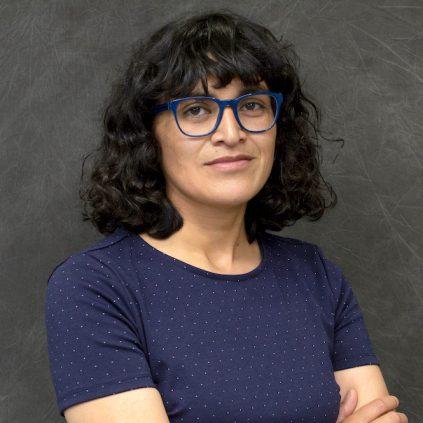 Email
EmailMaria Villanueva is a multimedia artist and educator whose work focuses on the relationship between the human and natural ecologies within the urban environment. Her artworks range in media from digital technology, drawing and painting, to site-specific sculpture installations. Maria earned a bachelor's degree from the Columbus College of Art and Design, and MFA from the University of North Texas.
Emma Todd
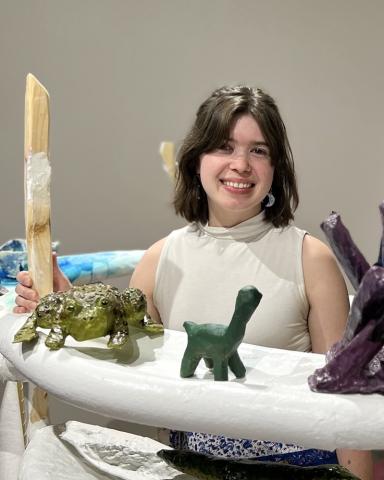
Emma Todd, raised in Virginia Beach, is a sculptural artist working with multilayered, phenomenological, and playful approaches to space-making and object-creation. Her work is oriented around the embodied, interactive, and affective qualities it facilitates for visitors, integrating sensorial immersion and subjective experience as subject matter. She has just graduated from UVA with a major in Studio Art (Sculpture Concentration) and Cognitive Science (Psychology Concentration) and a minor in Design. She has exhibited in a variety of student shows within Virginia and Scotland, participated in the ArtLab Student Residency at Mountain Lake (2022), and is currently part of the GlogauAIR Online Residency (2024).
Autumn Jefferson

Rian Gonzalez
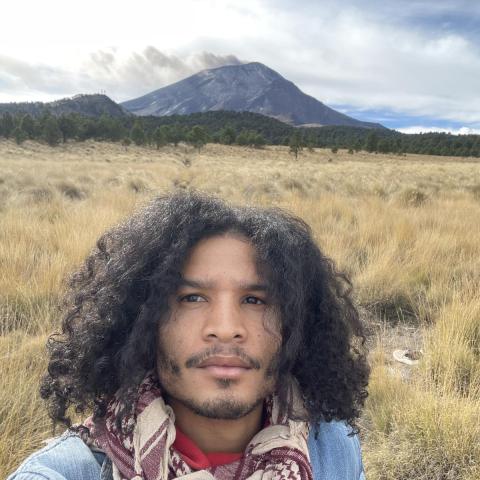
Zoe Farmer
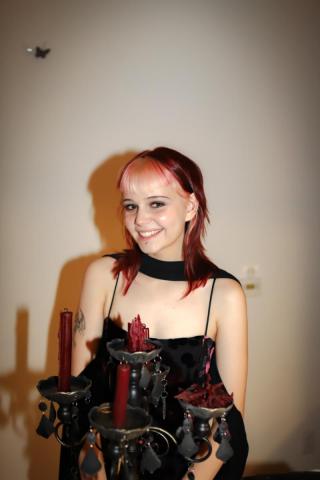
Zoe Farmer is an American performance and visual artist working with punk-electronic sound, silversmithing, and found objects to create both wearable and environmental pieces. Zoe was born and raised in Southwest Virginia and graduated with a degree in Studio Art from the University of Virginia in 2024.
Conceptually driven by her grandmother’s Appalachian upbringing, Zoe brings a DIY and feminist approach to her video art and performances. Her work is often visually tumultuous, appealing to immersive scales and modernistic technology to investigate rural subcultures. From wearable projections in “How a Computer Dresses,” displayed at the McGuffey Art Center in April 2024, to working with metal circuitry and deer antler in her latest installation piece “Are You Saved,” her practice is multidisciplinary and variable. Zoe seeks to tell stories and create worlds that are collaborative and futurist; where she acts as both consumer and performer.
Todd Benson
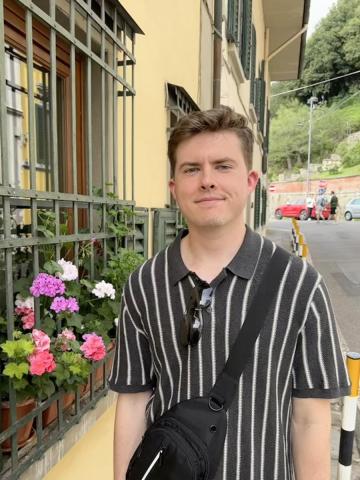
Todd Benson is a UVA ’24 graduate and painter from Ridgefield, CT. His work follows histories of development from boyhood to manhood. He depicts the loss of innocence, the disconnection between the emerging self and prescribed archetypes of masculinity, and the childlike playfulness that persists—even if hidden—into adulthood.
Elena Yu
Ruffin Gallery and Visiting Artist Coordinator
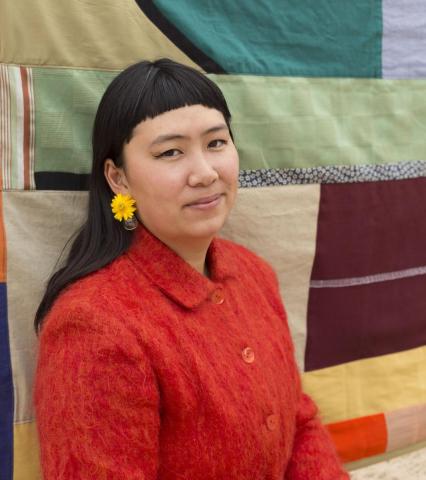 Email
EmailElena Yu is the Ruffin Gallery and Visiting Artist Coordinator. Elena oversees the Ruffin Gallery’s marketing and exhibition schedule, including exhibitions by visiting artists, faculty, and students. She also supports Studio Art’s robust program of visiting artists.
Elena received a BA in Art from UCLA in her hometown of Los Angeles. She moved to Charlottesville in July 2023 from Joshua Tree, CA, where she has worked as an interdisciplinary artist and arts organizer since 2016. Elena’s work weaves together many mediums and intentions including textiles, performance, sculpture, social practice, arts education, community building and collaborations. Prior to her work at UVA, Elena worked in arts programming and communications at High Desert Test Sites, Arts Connection, and Headlands Center for the Arts, as well as in arts education at the Hammer Museum and Groundwork Arts.
Niles Marthone
PhD Student
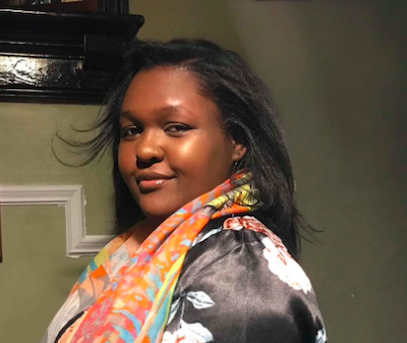 Email
EmailNiles Marthone is a first-year Ph.D. student in the Mediterranean Art and Archaeology Program studying under Dr. Tyler Jo Smith. She studies Archaic Athenian ceramics with a focus on iconographic depictions of mythological scenes and figures. She finds the social formation of myth and religion in art captivating and studies power dynamics, and the politics of representation.
Niles completed her Post-Baccalaureate Program in Ancient Art at Yale in 2022-2023. At Yale, she did research on the Gorgon Medusa using textual and visual sources and relying on the collections of Yale University Art Gallery (YUAG). This culminated in her research paper “Beastly Reflections: The Iconographic Significance of the Gorgon Medusa in Four Case Studies of Ancient Archaic Vases.” Before that, she received her B.A. in Classics from CUNY Brooklyn College in 2021 and one in English in 2020. She also received a Frank M. Snowden Scholarship from the Society for Classical Studies. While Niles has a background in Art History and Classics, she is now applying an archaeological perspective to her research.
Niles has served as an intern at the Yale University Art Gallery Ancient Art Department, as a Metropolitan Museum of Art Met Collective Cohort Ambassador, a CUNY Cultural Corps x Dream Yard Project mentor, and as a Classics Department Teaching Assistant at CUNY Brooklyn College.
Kaarin Percy
PhD Student
 Email
EmailKaarin Percy is a first-year doctoral student in the Mediterranean Art and Archaeology Program studying Classical Archaeology under the direction of Dr. Tyler Jo Smith. She studies ancient Greek ceramics and has a background in Bronze Age Crete. Percy’s research interests also include applying Geographical Information Systems (GIS) and photogrammetry to archaeological material and legacy data.
Before entering the University as a doctoral student, Percy completed her MA in Classical Studies from Tulane University. She received her Artium Baccalaureatus in Classics and Archaeology from the College of Charleston. She has participated in excavations at Stobi (2018) but has more recently focused on ceramic analysis in the Stratigraphical Museum at Knossos (2021-2022).
Leo Palma
PhD Student
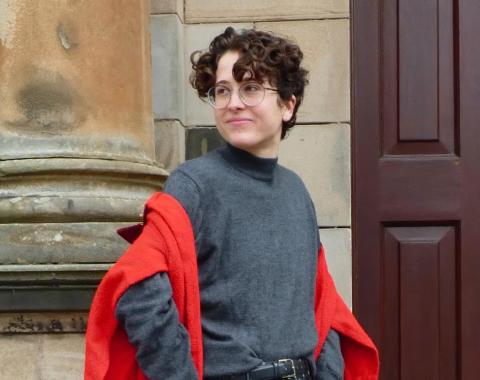 Email
EmailLeo Palma is a doctoral student in the Department of Art working under the direction of Professor David Getsy.
Leo has a bachelor’s degree in art history from the University of St Andrews, Scotland. Working in the field of postwar European art history, Leo has focused on Italian artists, examining questions of identity, materiality, and cross-temporal references in the visual language of experience. Since coming to UVA, Leo has given lectures in the United States and Italy on the sculptor Fiore de Henriquez.
Emmy Monaghan
PhD Student
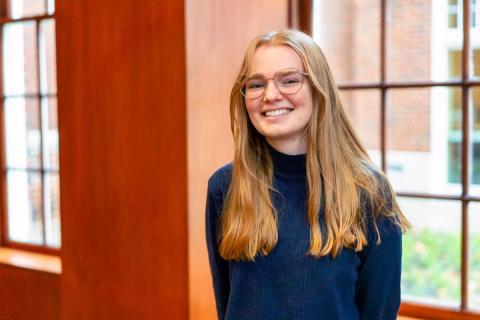 Email
EmailEmmy Monaghan is a doctoral student who studies contemporary Indigenous Australian art under the direction of Professor Henry Skerritt. She is currently an Interdisciplinary Doctoral Fellow in Indigenous Studies and a Praxis Fellow in Digital Humanities at the UVa Library Scholars' Lab.
During her time as a graduate student, she has co-curated the exhibition Issuing Modernisms: Modern Types, Stories, & Aesthetics at the Special Collections Library and served as a moderator for the panel “Yolŋu Short Films by the Mulka Project” as part of the opening of Madayin: Eight Decades of Aboriginal Australian Bark Painting from Yirrkala at the Asia Society in New York. She also assisted on the Indigenous Print Curatorial Workshop at the Kluge-Ruhe Aboriginal Art Collection which was funded by the Getty Paper Project.
Before entering the University as a doctoral student, Emmy worked as the Assistant Registrar at the Kluge-Ruhe Aboriginal Art Collection where she catalogued and researched the Basil Hall collection of prints. She contributed to several exhibitions at the Kluge-Ruhe, including co-curating Performing Country and Boomalli Prints & Paper: Making Space as an Art Collective. Emmy also served as the Curatorial Assistant for Oliphant: Unpacking the Archive at the Special Collections Library. She received her B.A. in Art History from the University of Virginia.
Rolando Vargas
Post-Doctoral Fellow
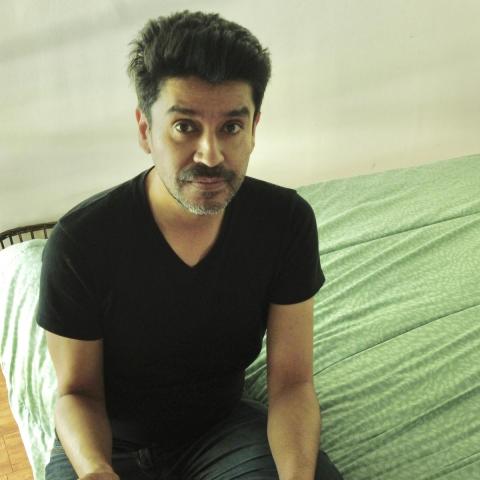 Email
EmailRolando Vargas is a media artist and scholar working with installation and digital media. He has a BFA in Fine arts from Universidad de los Andes, Colombia, received a Fulbright grant for his MFA in Intermedia and Digital Arts at the University of Maryland, and has a Ph.D. in Film and Digital media from the University of California, Santa Cruz. Rolando’s research «Kuna Indigenous Media and Knowledge in the Darién Tropical Rain Forest» focused on the politics of traversal and terrain, mapping and survival, and the geographies of collective labor and will as modes of indigenous resistance. Rolando has presented his work at Transmediale, the Kassel Documentary Film Festival, SESC Videobrasil, Rencontres Internationales Paris/Berlin, Kunstverein Düsseldof, EMAF, Ficvaldivia, and other international venues. In 2022, he received a Processing Foundation Fellow for promoting the use by Kuna children of P5.js language while reflecting on digital workflows and appropriating digital methods in their terms and world conceptions. You can read more about his latest project in Darién here.
Tatiana Flores
Jefferson Scholars Foundation Edgar F. Shannon Professor of Art History
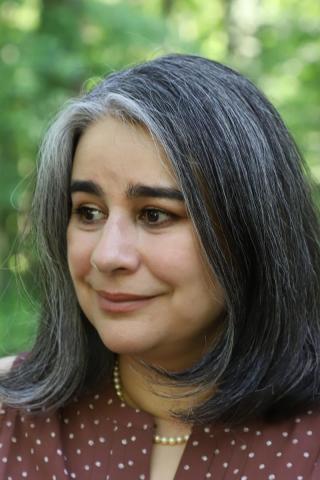 Email
EmailTatiana Flores is a scholar of the visual culture of the hemispheric Americas, specializing in modern and contemporary Latin American, Caribbean and Latinx art. She is the author of the award-winning monograph Mexico’s Revolutionary Avant-Gardes: From Estridentismo to ¡30-30! (Yale University Press, 2013). Committed to public-facing work, she has been active as an independent curator for over two decades. She curated the critically acclaimed Relational Undercurrents: Contemporary Art of the Caribbean Archipelago for the Getty Foundation’s Pacific Standard Time: LA/LA initiative in 2017. A major survey exhibition described as having “seismic importance,” it featured over eighty contemporary artists with roots in the insular Caribbean. Through the framework of the archipelago, Relational Undercurrents located thematic continuities in a region that has been long been regarded as fragmented and incomprehensible.
A 2017-18 Getty Scholar, Flores received the 2016 Arts Writers book prize from the Andy Warhol Foundation and was the 2007-2008 Cisneros Visiting Scholar at the David Rockefeller Center for Latin American Studies at Harvard University. She previously served as president of the Association for the Study of the Arts of the Present (ASAP) and was chair of the editorial board of Art Journal. Flores is senior editor and founding editorial board member of ASAP/Journal. Her co-edited volume The Routledge Companion to Decolonizing Art History is forthcoming.
Through her research, teaching and service, Flores advocates on behalf of disenfranchised and marginalized communities, artists and historical actors. This fall, she will be teaching the art history colloquium “Caribbean Aesthetics.”
Elnaz Latifpour
PhD Student
 Email
EmailElnaz is a Ph.D. student in the History of Art & Architecture graduate program at the University of Virginia. Moreover, she is a research fellow in Indigenous Studies (IDF) and a junior fellow in the Society of Fellows (SOF) at UVA.
Her research interests concentrate on Islamic Art History, and her interdisciplinary research focuses on weaving history, textiles, and anthropology. As a Ph.D. student in the Art History program, she situates weaving art in its historical context, analyzes its impact on the world around us, and develops theoretical frameworks that contribute to critical thinking.
Alex Del Dago
PhD Student
 Email
EmailAlex Del Dago (he/him) is a third-year Ph.D. student in the Art & Architectural History graduate program at the University of Virginia. Working with David Getsy, Alex studies and writes in the field of Modern & Contemporary American Art, with an emphasis on gender & sexuality, queer studies, and social/political art and material culture.
Prior to arriving in Charlottesville, Alex earned his B.A. in Art History & History, graduating summa cum laude and with University Honors from the University of North Florida. His senior thesis, “The Humanity of a Moment: Individuality, Identity, and Illness in the Art and Life of Hugh Steers,” focused on the American figurative painter Hugh Steers, whose portrayals of the HIV/AIDS crisis in New York during the early 1990s used ‘high art’ to humanize those living with AIDS and draw the viewer into the intimate embrace of loss, remembrance, and longing.
His master's thesis at UVA focused on the queer figurative painter George Tooker and his work with the Metropolitan Opera. Within this research, he argued that Tooker’s 1983 "Un Ballo in Maschera" represents a scene from Giuseppe Verdi’s opera that creates a conversation about visibility as well as the physical and moral principles that make up diverse bodies and expanded notions of personhood. This print signals a rare moment in the artist's career where he engaged directly with the opera as a site for artistic production, and as a result, it should be considered in line with Tooker’s larger body of work that engaged with the complicated status of American culture and identity in the post-war world and the convoluted ways in which one makes ties to an increasingly industrialized and disconnected society.
Other research and work by him include “Crafting an Image: Love, Confidence, and Representation in Leonard Fink’s Photographs of the Gay Liberation Movement” and “The Topes de Collantes Sanatorium: A Look at the Global Sanatorium Movement, the Climate Cure theory, and How Tuberculosis Influenced Modern Architecture.” These projects opened the door to conference presentations, publications in undergraduate research journals, the ‘Outstanding Undergraduate History Paper Prize’ at the University of North Florida accompanied with a grant, and the University of North Florida Hicks Honors College Top Award for Academic Distinction. This also led him to a curatorial & research internship at the Norton Museum of Art in the summer of 2021, where he researched and wrote text for the exhibition "For the Record: Celebrating Art by Women", created new & diverse summer programming, and offered guided tours of the museum’s permanent collection.
Alex looks forward to continuing his research at the University of Virginia, networking with scholars and peers in similar fields, and studying how art informs people’s lives, particularly the lives and work from marginalized communities.
Huajie (Catherine) Fan
PhD Student
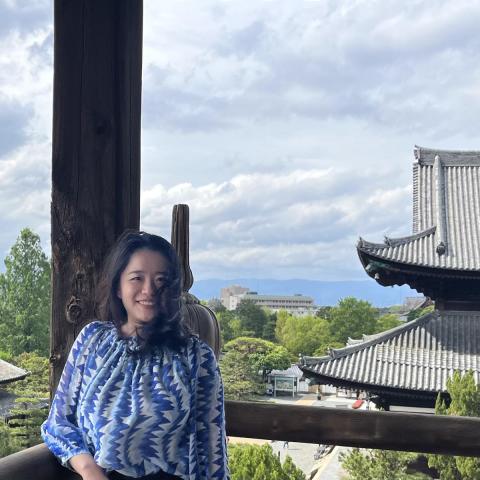 Email
EmailHuajie (Catherine) Fan is a first-year doctoral student studying medieval Buddhist art with Professor Dorothy Wong. Before joining UVA in 2022, Catherine graduated from SOAS University of London with an MA in History of Art and Archaeology. The master's thesis at SOAS, entitled "An Iconological Study of the Uṣṇīṣavijayā Cult in Dunhuang," explored different stages of the Uṣṇīṣavijayā cult in Dunhuang from the eighth to thirteenth century to reveal distinctive localized development of this cult. For undergraduate studies, Catherine graduated from Agnes Scott College with a bachelor's degree in Art History, minoring in Asian Studies, and Women's, Gender, and Sexuality Studies in 2020.
Emily Madrigal
PhD Student
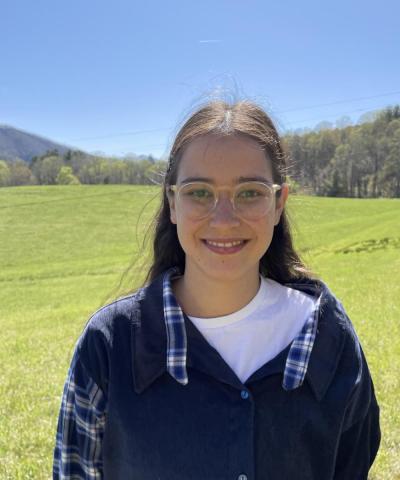 Email
EmailEmily is a PhD student in Art & Architectural History studying with Dr. Sarah Betzer. Emily’s research focuses on the materials of sculpture, specifically plaster in nineteenth-century France.
She received her BA in studio arts from Princeton University, worked as a studio assistant for New York-based sculptor Martha Friedman and studied at Penland School of Craft, all of which inform her understanding of material histories from an embodied perspective. She received her MA from the Williams College Graduate Program in the History of Art at the Clark Art Institute in Massachusetts, where the subject of her qualifying paper was: "Reverse Pygmalions: Plaster in Édouard Dantan's Atelier Paintings."
Kate Kreindler
Assistant Professor, Roman Art and Archaeology
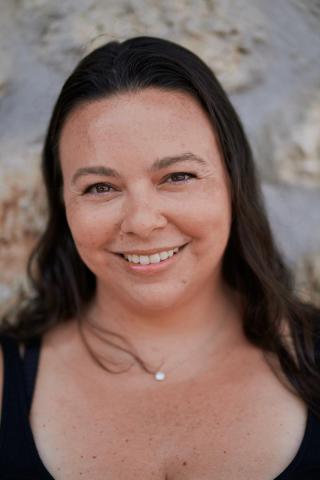 Email
EmailPhD Stanford University, 2015
Kate Kreindler (Assistant Professor, Department of Art) is a classical archaeologist who specializes in the archaeology of pre-Roman Italy. Her research focuses on economic development, connectivity, and urbanization in archaic Etruria, incorporating postcolonial theory to situate Etruscan communities in a wider Mediterranean context and identify Etruscan contributions to widespread Mediterranean economic growth in the 1st millennium BCE. She also examines cultural exchanges between indigenous populations, Greeks, and Phoenicians in peninsular Italy and Sicily.
Kate has excavated at various archaeological sites in Italy and currently is the Associate Director of the Poggio Civitate Archaeological Project, an archaeological field school based at an Etruscan settlement occupied from the 8th through 6thcenturies BCE. She and her colleagues are publishing materials from the site in both traditional print and digitally accessible formats, combining data from recent excavations with legacy data to comprehensively publish documentation from 55 years of work at Poggio Civiate and to create a georeferenced catalog and archive. Additionally, she is the Assistant Director of the Brock University Archaeological Project at Pantelleria, a Punic and Roman sanctuary site situated on the shores of the Lago di Venere. The project aims to understand continuities in religious practices from the Punic to Roman periods.
In addition to her fieldwork, Kate has partnered with colleagues to establish the Murlo Foundation, a non-profit organization that aims to make archaeological fieldwork financially accessible to field school students, especially to those from underrepresented groups and with special needs.
Conrad Cheung
Assistant Professor, Studio Art
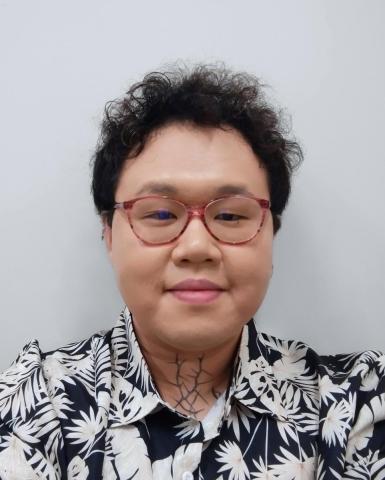 Personal Website
Email
Personal Website
Email
Conrad Cheung is an artist and educator working across installation, performance, architecture, video, VR, and more. Their practice proposes conditions of alternative spatiality, sociality, and affect as commons for flourishing and communing. In the face of our various crises, what material and affective infrastructures might allow for the emergence of eclectic new publics and ways of living differently with others, particularly socially illegible and nonhuman subjects? Cheung's interventions are typically driven by strategies of parafiction, collaboration, participation, and site-specificity, and bear ethical commitments to enactment at the scales of architecture and body.
Cheung is an Assistant Professor in the Department of Art and affiliate faculty in the Environmental Thought and Practice program at the University of Virginia. They currently work under several aliases for parafictional and collaborative purposes — as the architectural firm The Institute for Improvisational Infrastructures, with a rotating cast of collaborators; as the artist collective nonhumanities, with Anna Hogg and Katie Baer Schetlick; and as the experimental home-goods company front door = back door, with Jess Robbins of Haptic; and as various performed personae in public spaces.
Emily Chen
Intermediate Administrative Coordinator, Art History
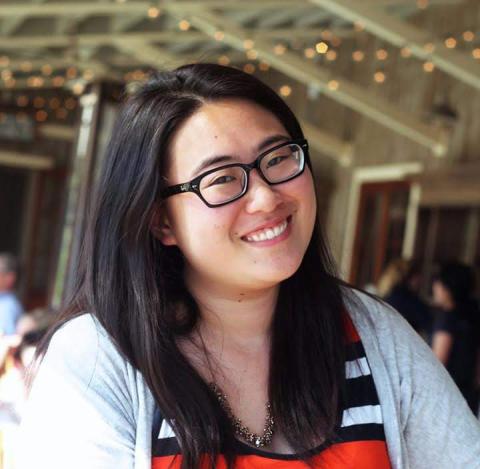 Email
EmailEmily Chen, Administrative Coordinator, has a BA in Spanish and American Studies from UVA. She is part of the department’s administrative team, assisting with academic, financial, and event operations. She provides primary academic support for the undergraduate program in Art History and graduate program in Art and Architectural History. She manages course scheduling and works closely with the Director of Undergraduate Program and the Director of Graduate Studies to ensure students are on track to graduate. She also supports the programs in Studio Art, Arts Administration, Archaeology, and Medieval Studies.
Mona Kasra
Associate Professor of Digital Media Design
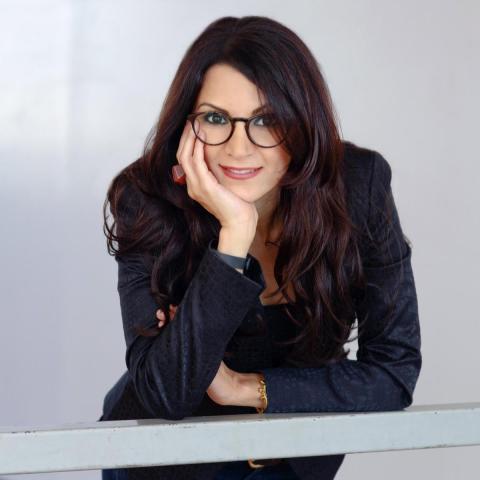 Email
Email
Mona Kasra is an Iranian American new media artist, designer, and interdisciplinary scholar. Her research investigates the political and theoretical implications of visual media technologies within our culture and cross-culturally, and her creative practice experiments with the affordances of media technologies within artistic forms and in a variety of improvisational framings. Her artwork has been exhibited widely in galleries and film festivals across the US and worldwide, and she has juried, curated, and programmed for many exhibitions, film festivals, and conferences. Mona also designs projections and interactive media installations and has received two Helen Hayes Award nominations for her media design work for live performances. Her recent publications can be found in several journals including New Media & Society, The Communication Review, Journal of Dance Education, and Media and Communication.
At the University of Virginia, Mona lectures and teaches courses on digital art, projection design, projections mapping, integrated interactive media, and immersive media. She is a faculty co-lead at the Karsh Institute’s Digital Technology for Democracy Lab. She was previously a faculty fellow at the Institute for Advanced Technology in the Humanities (IATH) as well as the New College Curriculum. In 2023, she completed the semester-long leadership development program at UVA called Leadership in Academic Matters (LAM), which focuses on recognizing, supporting, and nurturing those with demonstrated leadership characteristics and future potential across various roles. Currently, Mona holds leadership roles: an elected member of the executive committee (2019-2025) and Chair of ACM SIGGRAPH (2023-2024), and a board member for the New Media Caucus. www.monakasra.com
DEGREES:
2015 PhD in Arts & Technology
University of Texas at Dallas
2005 MFA in Video / Digital Art
California State University, Northridge
2000 BFA in Graphic Design & Visual Arts
Art University, Tehran, Iran
Jackson Taylor
Assistant Professor of Printmaking & Drawing, General Faculty
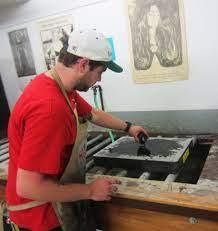 Email
EmailCurrently the Assistant Professor of Printmaking and Drawing at the University of Virginia, Jackson Taylor was born and raised in rural Kentucky on a large intergenerational cattle and tobacco farm. He holds a BFA in 2D Studio Art from the University of Louisville and received his MFA in Printmaking and Drawing from the University of Iowa in 2021. He is a master of lithography and monotype processes, which he uses to generate multifaceted prints and drawings about growing up in the American South. Taylor has conducted printmaking workshops across the US and exhibited his work internationally.
Anna Hogg
Assistant Professor of Film & Foundations
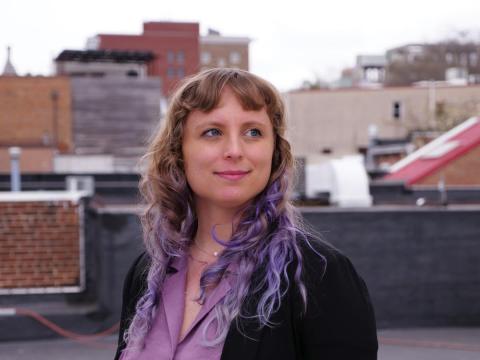 Personal Website
Email
Personal Website
Email
Anna Hogg is a teaching artist and filmmaker whose work addresses the relationship between memory and the body archive.
These investigations extend to the collective feminine that gathers memory, its objects and stories, the archive as affected by trauma, the intergenerational archive, as well as the ever-accruing archive of daily media and news sources. Within these contexts, one finds that the act of remembering and forgetting, preserving and refusing—making into refuse—are often intimately connected, and the boundary that divides them more fluid.
Her practice is based in both research and writing, touching upon feminist discourse, queer theory, and phenomenology. The form of each project is determined by the subject and the intersecting frameworks of documentary, narrative, essay, and poetic film practices. Whether re-speaking audio recordings in the style of verbatim theatre, creating a large life-sized camera obscura in which to create long exposure time-lapses of the body in movement, or editing image and sound as a stream-of-consciousness of the archive, the films transgress the easily defined boundaries of genre and discourse, often existing in multiple iterations.
Her films have screened internationally, including the Kasseler DokFest, Chicago Underground Film Festival, and Big Sky Documentary Film Festival. She was awarded the Jury prize for Best International Work at the 2017 WNDX Festival, and nominated for the Golden Key award at the 2017 Kasseler DokFest. She holds an MFA in Film & Video from the California Institute of the Arts and now teaches Cinematography at the University of Virginia.
Emily Daniel
Administrative Coordinator, Studio Art
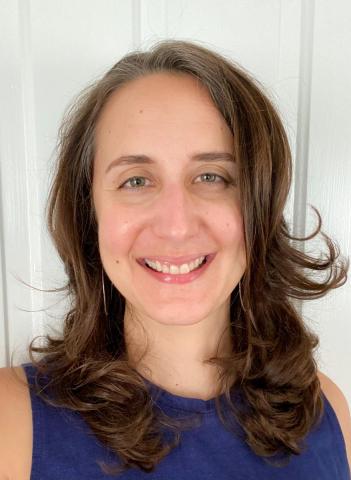 Email
EmailEmily is a UVA alum (BA in English, ’03). She has held several positions in academic administration at UVA as well as Stanford University, but this is the first time she has had the pleasure of working so closely with students. Her current role allows her to participate in most of the workings of this side of the department: class scheduling, purchasing, editing grant proposals, planning visits for outside artists, managing the gallery schedule, and marketing the program. She particularly enjoys being a resource to others and planning department events that foster a sense of community.
Marisa Williamson
Assistant Professor, Studio Art
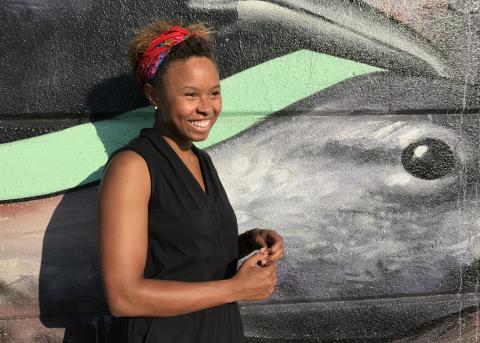 Personal Website
Email
Personal Website
Email
Marisa Williamson is a project-based artist who works in video, image-making, installation and performance around themes of history, race, feminism, and technology. She has produced site-specific works at Thomas Jefferson’s Monticello (2013), Storm King Art Center (2016), the Metropolitan Museum of Art (2016), the University of Virginia (2018), and SPACES Cleveland (2019), and by commission from Monument Lab Philadelphia (2017), and the National Park Service (2019).
Her work has been featured in exhibitions at Artpoetica, SOHO20, and BRIC in Brooklyn, The Elizabeth Foundation for the Arts (NYC), Vox Populi (Philadelphia), Mana Contemporary Chicago, Human Resources (LA), and Centro per l'arte contemporanea Luigi Pecci in Prato and Stefania Miscetti gallery in and Rome, Italy.
Williamson has been awarded grants from the Graham Foundation, Rema Hort Mann Foundation and the Arthur and Elizabeth Schlesinger Library on the History of Women in America. In addition to being the Ruffin Distinguished Art-in-Residence at UVA in 2018, she has had residencies at Triangle Arts Association, the Shandaken Project, and ACRE. She was a participant in the Skowhegan School of Painting & Sculpture in 2012 and the Whitney Museum’s Independent Study Program in 2014-2015. Williamson holds a BA from Harvard University and an MFA from CalArts.
Marisa Williamson will become part of the first cohort of faculty to be hired through a new faculty hiring initiative in the College of Arts and Sciences devoted to Race, Justice and Equity. This initiative builds on a broad range of recent commitments, including an Andrew W. Mellon Foundation funded project to hire 10 Tenure/Tenure Track faculty working on the Global South; an expansion and University endowment commitment to the Carter Woodson Institute and Department of African and African-American Studies; the establishment of the Dean’s Doctoral Fellowships to enhance our recruitment of underrepresented graduate students; and a parallel new project in collaboration with the Mellon Foundation to appoint 30 Race, Justice, and Equity Postdoctoral and Arts fellows across the University.
David J. Getsy
Eleanor Shea Professor of Art History
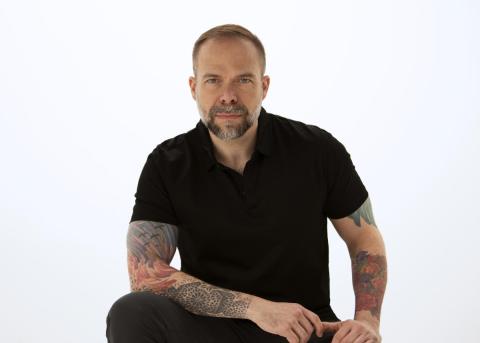 Personal Website
Email
Personal Website
Email
David J. Getsy is a historian and curator of art and performance working at the intersection of art history, queer studies, transgender studies, and performance studies. His research examines how non-normative genders and sexualities have been fundamental to the shape of art history’s narratives, and he has published widely on art in the United States and Europe from the nineteenth to the twenty-first centuries.
His current research focuses on performance and art in 1970s and 1980s. This is the terrain of his newest book, Queer Behavior: Scott Burton and Performance Art (University of Chicago Press, 2022), which received the 2023 Robert Motherwell Book Award for outstanding publication in the history and criticism of modernism in the arts. Getsy is working on a new book, preliminarily titled “Street Addresses: Performing the Queer Life of the Street in 1970s New York,” which is based on archival research and oral history interviews conducted with artists, playwrights, performers, and viewers. Some of this work was initially debuted in the retrospective exhibition Rubbish and Dreams: The Genderqueer Performance Art of Stephen Varble in 1970s New York (Leslie-Lohman Museum, NYC) and a related satellite exhibition, The Gutter Art of Stephen Varble, which originated at the ONE Archives Gallery & Museum in California before travelling to London, Chicago, and Berlin, where it closed in 2022 at the Schwules Museum.
His earlier books include Abstract Bodies: Sixties Sculpture in the Expanded Field of Gender (Yale University Press, 2015; reissued in paperback in 2023), which was the first study to bridge art history and transgender studies, and the widely-read anthology of contemporary artists’ writings, Queer (MIT Press, 2016). His writings have been published in GLQ, TSQ, Art Bulletin, Art History, Art Journal, Artforum, Criticism, PAJ, ASAP/Journal, and numerous exhibition catalogues. He and his co-author Che Gossett received the College Art Association’s Award for Distinction honoring the most distinguished contribution to Art Journal in 2021 for their "Syllabus on Transgender and Nonbinary Methods for Art and Art History" in Art Journal 80.4 (Winter 2021).
Getsy received his B.A. with highest honors from Oberlin College and M.A. and Ph.D. from Northwestern University. He came to the University of Virginia in 2021 from the School of the Art Institute of Chicago, where he taught from 2005 to 2021 and was the Goldabelle McComb Finn Distinguished Professor of Art History since 2011. Internationally, he has been the 2020–2021 Terra Foundation Professor of American Art at the John F. Kennedy Institute for North American Studies at the Freie Universität Berlin, a Distinguished Visiting Fellow in the School of English and Drama at Queen Mary University of London, and an Honorary Visiting Professor in the Department of History of Art at the University of York, United Kingdom. In 2023, he received an Award for Excellence in the Arts and Humanities from the University of Virginia, and in 2025 he was awarded a Guggenheim Fellowship.
He currently serves as a member of the editorial board of the journal American Art and the Publications Committee of the Paul Mellon Centre for Studies in British Art (UK). He has previously been Chair of the Editorial Board of The Art Bulletin (2013–2015) and member of the board of directors for the University of Virginia Press. He is currently on the board of directors for the Fire Island Artist Residency for emerging LGBTIQ artists and writers, the Museum of Modern Art’s Advisory Committee for the Estate of Scott Burton, and the advisory board of the Faulkner-Morgan Archive. At the University of Virginia, he is an affiliated faculty member of the Department of American Studies and the Department of Women, Gender, and Sexuality.
Professor Getsy welcomes inquiries from prospective PhD students working in one or more of the areas in which he teaches and researches: modern and contemporary art, queer studies, transgender studies, sculpture studies, and performance studies.
Awards and recent major fellowships
- Guggenheim Fellowship, 2025
- Robert Motherwell Book Award for outstanding publication in history and criticism of modernism in the arts, 2023
- Award for Excellence in the Arts and Humanities, University of Virginia, 2023
- Award for Distinction, College Art Association, for the most distinguished contribution published in Art Journal in 2021 (with Che Gossett, University of Pennsylvania)
- Terra Foundation Visiting Professorship, Freie Universität Berlin, 2020–2021
- Dedalus Foundation Senior Fellowship, 2019
- Graham Foundation for Advanced Studies in the Fine Arts, 2018
- Distinguished Visiting Fellowship, Queen Mary University of London, 2017
Books, single-author
- Queer Behavior: Scott Burton and Performance Art (University of Chicago Press, 2022). Winner of the 2023 Robert Motherwell Book Award
- Abstract Bodies: Sixties Sculpture in the Expanded Field of Gender (Yale University Press, 2015, reissued as paperback in 2023)
- Rodin: Sex and the Making of Modern Sculpture (Yale University Press, 2010)
- Body Doubles: Sculpture in Britain, 1877–1905 (Yale University Press, 2004)
Edited volumes
- Magic Episodes and Other Synchronicities: The Transhemispheric Correspondence of Scott Burton and Eduardo Costa in the 1970s, co-edited with Patrick Greaney (Ugly Duckling Presse, forthcoming 2025)
- Queer, Whitechapel Documents of Contemporary Art series (MIT Press, 2016)
- Scott Burton: Collected Writings on Art and Performance, 1965–1975 (Soverscove Press, 2012)
- From Diversion to Subversion: Games, Play, and Twentieth-Century Art, Refiguring Modernism series (Pennsylvania State University Press, 2011)
- Sculpture and the Pursuit of a Modern Ideal in Britain, c.1880–1930 (Ashgate, 2004)
- co-editor (with Julian B. Carter and Trish Salah), "Trans Cultural Production," special issue for the inaugural volume of TSQ: Transgender Studies Quarterly 1.4 (2014).
Selected articles and recent essays
- "How to Teach Manet’s Olympia after Transgender Studies," Art History 45.2 (April 2022): 342-69. [open access link]
- "The Spectacle of Privacy: Geoffrey Hendricks’s Ring Piece and the Ambivalence of Queer Visibility," The Art Bulletin 104.3 (September 2022): 117-45. [link to PDF]
- "Bricks and Jails: On Martin Wong’s Queer Fantasies," in Krist Gruijthuijsen and Agustin Pérez Rubio, Martin Wong—Malicious Mischief, exh. cat., KW Institute for Contemporary Art, Berlin (Berlin: Verlag der Buchhandlung Walther und Franz König, 2022), 178-98. [link to PDF]
- (co-authored with Che Gossett) "A Syllabus on Transgender and Nonbinary Methods for Art and Art History,"Art Journal 80.4 (Winter 2021): 100–115. Winner of the College Art Association’s Award for Distinction for best article published in Art Journal in 2021. [republished open access at Art Journal Open]
- "The Materiality and Mythology of Rodin’s Touch," in Auguste Rodin: Displacements (Copenhagen: Ny Carlsberg Glyptoteket, 2021), 42-62. [link to PDF]
- "Ten Queer Theses on Abstraction," in Jared Ledesma, ed., Queer Abstraction (Des Moines: Des Moines Art Center, 2019), 65-75. [link to PDF]
- "Queer Figurations in the Sculpture of Elmgreen & Dragset," in Leigh Arnold, ed., Elmgreen & Dragset: Sculpture (Dallas: Nasher Sculpture Center, 2019), 154-94. [link to PDF]
- "Queer Intolerability and its Attachments," introduction to Queer (Cambridge: MIT Press, 2016) [link to PDF]
- "Acts of Stillness: Statues, Performativity, and Passive Resistance," Criticism 56.1 (2014):1-20. [link to PDF]
- "Capacity," in "Key Concepts for a Twenty-First-Century Transgender Studies," special issue of TSQ: Transgender Studies Quarterly 1.1-2 (May 2014): 47-49. [link to PDF]
For a full list of articles and essays (with download links) and complete c.v. see http://davidgetsy.com
Ganiyu Jimoh
PhD Student
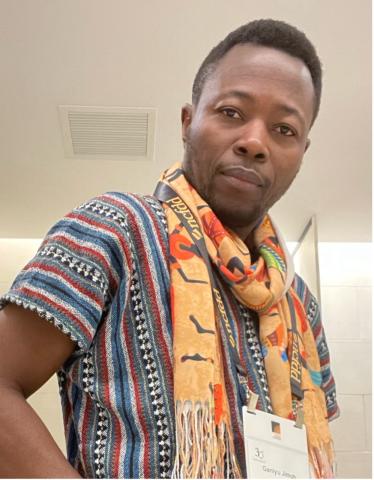 Email
EmailGaniyu Jimoh is a PhD candidate in the History of Art and Architecture program. His research interest is in Africa's modern and contemporary visual culture, focusing on digital arts.
Ganiyu, also known as Jimga, is a political cartoonist and a digital artist ( www.jimgatoons.com ), with several local and international exhibitions to his credit. Jimga holds a B.A. in Graphic Design, an M.A. in Art History, and PhD in Visual Arts, all from the University of Lagos, Nigeria. Before coming to UVa for his second doctoral research, he taught undergraduate and graduate-level design, cartooning, and African art history courses. He was a visiting scholar at the African Studies Center, Michigan States University, in 2015, a National Research Foundation Postdoctoral Fellow at the Rhodes University, South Africa, in 2019, a recipient of the African Studies Association presidential fellowship (2019), and CAA-Getty International Program participant in 2020.
Ganiyu is currently an Interdisciplinary Doctoral Fellow in Indigenous Studies at UVa.
Catherine Doucette
PhD Student
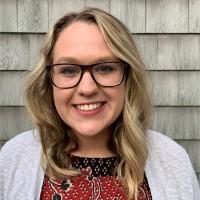 Email
Email
Catherine Doucette is a fourth-year PhD candidate in Art and Architectural History and an Interdisciplinary Doctoral Fellow in Caribbean Literatures, Arts, and Cultures at UVA. Working under the guidance of Louis Nelson, Catherine’s research explores the material culture of the early modern Caribbean and Atlantic world during the period of the trans-Atlantic slave trade. Catherine’s dissertation brings together and considers objects, images, and spaces made in early colonial urban Jamaica during the late seventeenth-century to the early post-emancipation period. In her dissertation project, objects made in early colonial Jamaica–including portraiture, ceramics, silver, tortoiseshell, drums, and townhouses–intervene to amplify ways enslaved and freed people of African descent used material strategies to resist and forge their own identities and conceptions of Blackness in the early modern Atlantic world. During the fall 2023 semester, Catherine was an affiliated researcher in the Department of History and Archeology at the University of the West Indies, Mona in Jamaica. Most recently, Catherine spent time in the UK visiting country houses to identify, document, and study early modern Jamaican and Caribbean objects held at National Trust sites.
During the 2024-2025 academic year, Catherine is a Fellow at the John Carter Brown Library and a Dissertation Fellow at the Winterthur Museum, Garden & Library. Her research has been supported by The Paul Mellon Centre, the Silver Society, the English Ceramic Circle, the Center for Global Inquiry & Innovation, and a Dumas Malone Graduate Research Fellowship. Before starting her PhD, Catherine earned her master’s degree in Art History from The Courtauld Institute of Art. Catherine helps lead The Furniture History Society’s early career development program and she has previously held positions at the Preservation Society of Newport County, The Metropolitan Museum of Art, the British Museum, the Cleveland Museum of Art, the Philadelphia Museum of Art, and the Museum of Fine Arts, Boston.
Anastasia Dakouri-Hild
Associate Professor, Art History
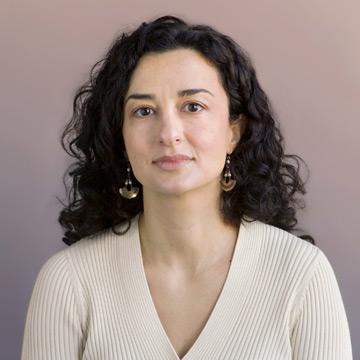 Email
EmailCurriculum Vitae
Anastasia Dakouri-Hild has a combined field (academic and CRM) and curatorial background in ancient art and archaeology. She received her doctoral degree from the Faculty of Classics, University of Cambridge funded by a merit scholarship at Christ's College. She has been an associate professor in Aegean and Near Eastern art and archaeology at the University of Virginia since 2018, and has taught at the university since 2006. She is the co-editor of the Berghahn International Monographs in Prehistory and serves on the national outreach committee of the Archaeological Institute of America; in the past she also served as assistant director of the Institute for Advanced Technologies in the Humanities (IATH) at the University of Virginia. She has been the recipient of the Michael Ventris Award for Mycenaean Studies (University of London), an American Council of Learned Societies fellowship (ACLS), the award for Outstanding Work in Digital Archaeology (Archaeological Institute of America), and a Leonard A. Lauder visiting senior fellowship (National Gallery of Art). She specializes in Aegean prehistory (3000-1100 BCE), with broad research interests in value theory and economics, the archaeology of power and the state, ceramic analysis and technology, social aspects of technology and technique, creativity, memory and material culture, emotion and cognition, embodied and multi-sensorial approaches to material culture, the politics of the past, the uses of digital technology in the humanities, and the links between landscape, place and performance. She conducted field work in Thebes in Greece since 1998, where she re-excavated and studied the House of Kadmos site, initially through the Greek Archaeological Service. She has also re-studied the old excavation material from the Theban cemeteries (with Y. Fappas and V. Aravantinos, 2011-2014). From 2019-2023 she has been the PI and co-director (with E. Andrikou and S. Davis) of the four-year Kotroni Archaeological Survey Project (KASP) at the legendary site of Aphidna, Greece. The latter is a multi-specialty team project which deploys a host of conventional field and innovative geospatial techniques in multi-modal landscape analysis. For her research she has received multiple internal awards as well as external ones from the Institute of Aegean Prehistory (Philadelphia), Harvard University, Hexagon Geospatial, Digital Globe, the Archaeological Institute of America, the Mediterranean Archaeological Trust (London), and the 4VA consortium. Dakouri-Hild teaches courses on Aegean prehistory, Egypt, the Near East, the politics of the past, art and cognition, and anthropology/sociology as it relates to the visual (especially antiquity) and popular culture. Recently she has been selected to teach a general course on creativity as an Arts and Sciences College fellow. She has directed undergraduate and graduate independent studies and DMP studies on Aegean and Egyptian archaeology, ethno-archaeology, and feminist theory. She has published four edited volumes (Public Archaeologies of the Ancient Mediterranean, 2017; Staging Death: Funerary Performance, Architecture and Landscape in the Ancient Mediterranean, with M. Boyd, 2016; Beyond Illustration: 2D and 3D Technologies as Tools for Discovery in Archaeology, with B. Frischer, 2008; and Autochthon: Papers Presented to O.T.P.K. Dickinson on the Occasion of his Retirement, with S. Sherratt, 2005). She is currently preparing the publication of the House of Kadmos, the Theban cemeteries, and the results of the KASP survey, while working on an exhibition at the Fralin Museum of Art (2025) on the links between Egypt and Nubia.
Ash Duhrkoop
PhD Student
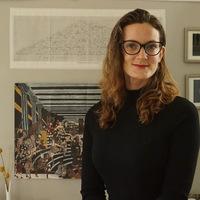 Email
EmailAsh Duhrkoop specializes in Twentieth-century and African art, with an interest in ecocriticism. Her current research considers the impacts of colonialism, industrialization, and extractive economies on art and material culture in the Democratic Republic of the Congo. This interest stems from her undergraduate thesis, Atomic Bodies, which traced connections between artistic responses to the atomic bombings of Hiroshima and Nagasaki and the nuclear meltdown at the Fukushima Daiichi nuclear energy plant in Japan. She holds an MA in Modern Art: Critical and Curatorial Studies from Columbia University and a BA in Art History and Written Arts, with a concentration in Southeast Asian Studies, from Bard College.
From 2016 through 2020, Ash served as the Andrew W. Mellon Curatorial Research Associate for African Art at the Virginia Museum of Fine Arts for a grant-funded project for technical analysis and provenance research on the museum’s African art collection. Some of her research was published in The Arts of Africa: Studying the Collection at the Virginia Museum of Fine Arts, which she co-authored. While at the VMFA, Ash curated the exhibition History from below the Mountain: Tshibumba Kanda-Matulu and Sammy Baloji. She has also held several curatorial positions in New York City, including at Dia Foundation for the Arts.
Elisabeth Rivard
PhD Candidate
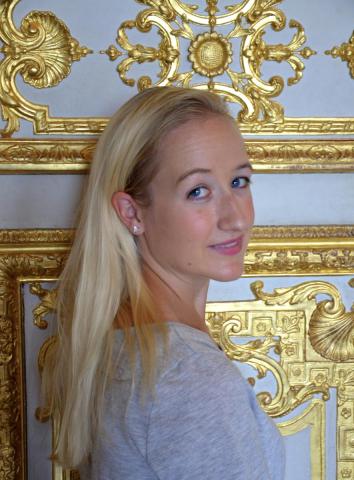 Email
EmailElisabeth (Lizzie) Rivard is a third-year doctoral student studying eighteenth-century British art under Dr. Douglas Fordham. Her current dissertation research focuses on the role of drawing in academic training at the Royal Academy.
After receiving a B.A. in art history and European history from Northwestern University, she completed a MA through the Graduate Program in the History of Art at Williams College. Prior to UVA, she worked in digital media at the Jewish Museum, and held internships at the Clark Art Institute and the New York Public Library.
She is also engaged in researching prints and drawings related to Thomas Jefferson's travels through southern France in 1787. This project aims to explore issues of omission in both the visual and historical record of eighteenth-century cultural landscapes.
Isabelle Ostertag
PhD Candidate
 Email
EmailIsabelle Ostertag is a doctoral candidate researching English medieval architecture under Dr. Lisa Reilly. Her dissertation, "Porta Caeli: Lay Piety and Marian Devotion in the Parochial Lady Chapels of East Anglia,” analyzes lay Marian devotion in medieval England through an examination of parochial chapels dedicated to the Virgin Mary in East Anglia. She received a Master of Philosophy in History of Art and Architecture from the University of Cambridge where she studied under the supervision of Dr. Paul Binski. Her dissertation provided the first complete description of the sculptural program in the Lady Chapel at Ely Cathedral. After completing her MPhil she worked in the art sector in New York City, first at Doyle Auction House and then at the Hill Art Foundation. She received her BA in Art History and German from Williams College.
She is particularly interested in Marian devotion in medieval art and architecture.
Jennifer Marine
PhD Candidate
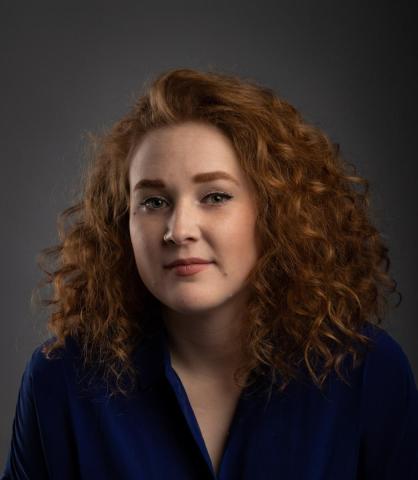 Email
EmailJennifer Marine is a doctoral candidate in the History of Art and Architecture program working under the direction of Professors Douglas Fordham and Christa Noel Robbins. Her research explores intersecting histories of science, technology, media studies, and gender. Her dissertation, Registering the Invisible in Fin de-Siècle Europe, examines late-nineteenth-century European technologies such as photography, X-rays, and sound recording devices to offer a broader understanding of representational practices at this pivotal moment in the history of modernism. Through these devices, she questions the definitions and categories of art, science, and technology in the fin-de-siècle era. Her work has been supported by the Paul Mellon Centre for British Art, a Dumas Malone Graduate Research Fellowship, and the Center for Global Inquiry + Innovation at the University of Virginia. She is also one of the 2024-2025 recipients of the Joan and Stanford Alexander Award for dissertations on the history of photography from the Museum of Fine Arts, Houston.
Over the course of her graduate career, she has worked in Digital Humanities, serving as a Praxis Fellow in the Scholars’ Lab in 2021-2022 where she co-created Your Name Here and writing code for other DH projects, including DIGITAL(ian) Journey, an Exploration of Goethe’s Italian Journey. She also co-curated exhibitions across the university, such as Everyone a Curator: The Langhorne Collection of 18th-Century Prints at the Fralin Museum of Art and Boomalli Prints and Paper: Making Space as an Art Collective at the Kluge-Ruhe Aboriginal Art Collection.
Before arriving at the University of Virginia, Jennifer received her M.A. with Distinction from the Courtauld Institute of Art. Her master’s dissertation used nineteenth-century ideas of physiological psychology and the materiality of George Frederic Watts’s portraits to challenge traditional interpretations of his late portraiture. She received her B.A from the University of Arizona in 2018 with a double major in Art History and French and a minor in Mathematics, graduating with Honors and summa cum laude.
Jennifer is currently in Rome, serving as a 2024-2025 Predoctoral Fellow in the research group “Visualizing Science in Media Revolutions” at the Bibliotheca Hertziana – Max Planck Institute for Art History.
Stephanie Polos
PhD Candidate
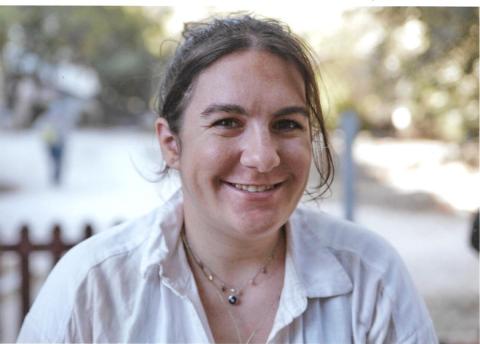 Email
EmailStephanie Polos is in her third year in the Program for Mediterranean Art and Archaeology, studying under Dr. Tyler Jo Smith. Her current research focuses on the use and iconography of fifth- and fourth-century Greek grave monuments and the intersections of art, belief, and funerary practice.
Prior to coming to UVA, Stephanie received a B.A. in History with a minor in Anthropology from Humboldt State University (Arcata, CA), graduating summa cum laude in 2015. In 2019 she earned an M.A. in Classics, graduating with honors from San Francisco State University (San Francisco, CA). Her M.A. thesis, “Anacreontic or Dionysian?: Ethnic and Gender Ambiguity on the Anacreontic Vases,” investigates the imagery of the “Anacreontic” vases (c. 525-480 BCE) and argues that the figures, whose appearances are often described as imitating women or easterners, are instead mimicking Dionysian iconography and the god’s gender and ethnic ambiguity.
Stephanie has also supplemented her academic background with experience abroad. She has participated in the American School of Classical Studies in Athens’ summer session (2016) and summer seminar (“Thanatopsis,” 2022), the Via Consolare Project excavation in Pompeii (2018), and the Agora Excavations in Athens (2019, 2022).
Headshot by Craig Mauzy, Agora Excavations
Karl-Magnus Brose
PhD Candidate
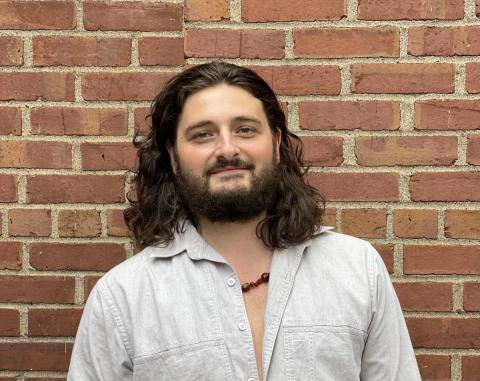 Email
EmailKarl is a fourth-year doctoral candidate working under the direction of Professor Sarah Betzer. He studies early modern European sculpture with a focus on the Old Regime, ancient sculpture and the rise of aesthetic theory. Karl's dissertation examines the work of the French sculptor Edme Bouchardon, centering his Roman period between 1723-1732. He studies Bouchardon's use of ancient models, using his designs for engraved gems, medals, and portraiture to reexamine the social and political stakes of debates about how to imitate ancient art, recovering the sources of art-historical writing in sculptural practice. His broader scholarly interests include art criticism, the history of collecting, the relationship between theory and practice, the history of the paragone, the role of Greek sculpture in German philosophy, the relationship between aesthetics and commodification, and the historiography, theories, and methods of art history.
Karl graduated from the University of Minnesota in 2015 with a B.A. in Philosophy and a minor in Art History. His summa cum laude thesis studied the entanglement of the modern and the antique in the work of J.J. Winckelmann, focusing on his criticism of the sculptor Gian Lorenzo Bernini. He received his M.A. in Art History from the University of Toronto in 2019. In 2021 he was a co-curator for the exhibition "Boomalli Prints and Paper, Making Space as an Art Collective at the Kluge Ruhe Aboriginal Art Collection of the University of Virginia." He is currently conducting dissertation research in Paris and Rome.
Henry Skerritt
Assistant Professor, Art History/Curator of Research, Kluge-Ruhe Aboriginal Art Collection
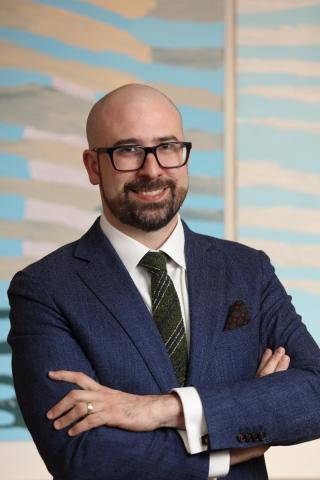 Email
EmailHenry Skerritt is Assistant Professor in the Department of Art and Curator of Research at the Kluge-Ruhe Aboriginal Art Collection of the University of Virginia. His research centers on the engagement of Indigenous peoples with the institutions of art, with a particular methodological focus on the role of Indigenous communities in curating their own art histories. Skerritt has worked on over twenty exhibitions in the United States and Australia, including Madayin: Eight Decades of Aboriginal Australian Bark Painting from Yirrkala (Kluge-Ruhe and touring, 2022-25); Irrititja Kuwarri Tjungu | Past and Present Together: Fifty Years of Papunya Tula Artists (Kluge-Ruhe and touring, 2021-2024); A World of Relations (Hood Museum of Art, Dartmouth, 2019); Marking the Infinite: Contemporary Women Artists from Aboriginal Australia (Nevada Museum of Art and touring, 2016-19); and No Boundaries: Aboriginal Australian Contemporary Abstract Painting (Nevada Museum of Art and touring, 2015-16). Skerritt has written extensively on Indigenous art, including editing six important catalogues, and contributing essays for publications by Harvard Art Museums; the Hood Museum of Art, Dartmouth; the National Museum of Australia; the Art Gallery of New South Wales; and the Museum of Contemporary Art Australia.
Visit the Kluge-Ruhe ->
Edited Books
Beyond Dreamings: The Rise of Indigenous Australian Art in the United States. Charlottesville, VA.: Kluge-Ruhe Aboriginal Art Collection of the University of Virginia, 2019.
The Inside World: Contemporary Aboriginal Australian Memorial Poles. Reno and New York: Nevada Museum of Art and Prestel Publishing, 2019.
Marking the Infinite: Contemporary Women Artists from Aboriginal Australia. Reno and New York: Nevada Museum of Art and Prestel Publishing, 2016.
No Boundaries: Aboriginal Australian Contemporary Abstract Painting. Reno and New York: Nevada Museum of Art and Prestel Publishing, 2014.
Peer-Reviewed Articles
“Seeing Through Spencer: Gabriel Maralngurra’s Paintings of Baldwin Spencer.” Pacific Arts: The Journal of the Pacific Arts Association, 14, no.1-2 (2015): 106-119.
Selected Book Chapters
“The Country Speaks Through Her.” In Noŋgirrnga Marawili: From my Heart and Mind, edited by Cara Pinchbeck, 34-45. Sydney: Art Gallery of New South Wales, 2018.
“To See a World: Picturing Nature through the Prism of Midawarr.” In Midawarr: Harvest, edited by John Wolseley and Will Stubbs. Canberra: National Museum of Australia, 2017.
“Just Weather: The Art and Philosophy of Shane Pickett.” In Meeyakba: Shane Pickett, edited by Nick Tapper with Diane Mossenson and Violet Pickett, 85-99. Perth: Mossenson Art Foundation, 2017.
“A Stitch in Time: How Aboriginal Australian Artists are Reweaving Our World.” In Everywhen: The Eternal Present in Indigenous Art from Australia, edited by Stephen Gilchrist, 16-27. Cambridge, Mass.: Harvard University Press, 2016.
“The Biggest Name in all the World: Locating Ngarra in the Global Contemporary.” In Ngarra: The Texta Drawings, edited by Nick Tapper, 21-29. Perth: Mossenson Art Foundation Press, 2015.
Nyilyari Tjapangati: Vivre le Rêve/Living the Dream. Bilingual catalogue publication in French and English. Paris: Arts d’Australie, 2015.
“Is Art History Any Use to Aboriginal Artists? Gabriel Maralngurra’s Contact Paintings.” Double Desire: Transculturation and Indigenous Contemporary Art, edited by Ian McLean, 223-241. Newcastle: Cambridge Scholars Publishing, 2014.
“Strange Relatives: Negotiating the Borderlines in East Kimberley Painting.” In Crossing Cultures: The Owen and Wagner Collection of Contemporary Aboriginal Australian Art, edited by Stephen Gilchrist, 97-107. Hanover, New Hampshire: Hood Museum of Art, Dartmouth College, 2012.
Betsy Bennett Purvis
Lecturer, Art History
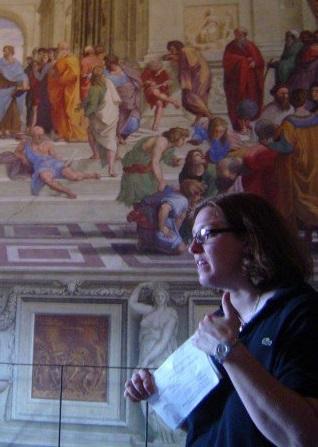 Email
EmailBetsy Bennett Purvis is a scholar of Italian Renaissance Art and Architecture. She earned her doctorate from the University of Toronto where her dissertation focused on the use of large-scale, life-like polychrome sculpture terracotta Lamentation groups by Niccolò della’Arca and Guido Mazzoni as a means of political messaging in 15th-century Italy. This work forms the nucleus of a book manuscript currently in progress—Lamenting the Sepulchre: Italian Terracotta Lamentation Tableaux and the Renaissance Crusades.
More recently, her research focuses on questions of intermediality, particularly between painting and sculpture, and materiality and embodiment in relation to a variety of materials within the artistic economy of Italian Renaissance sculpture. She is particularly interested in questions surrounding the perceived animated qualities of different sculptural media and their relationship to concepts of animated presence in figurative sculpture and notions of the “living image.”
Purvis joined the faculty in 2017 and has taught the following courses: Early Italian Renaissance Art, High Renaissance and Mannerist Art, The Global Renaissance, Making and Meaning in Renaissance Art, Decorative Complexes in Italy 1300-1600, Gender and Art in the Italian Renaissance, History of Architecture, and Geographies of Identity in the Italian Renaissance (Graduate Independent Study). Before coming to the University of Virginia, she taught undergraduate classes in the history of Italian Renaissance art and architecture at the University of Toronto and the Summer Studies Abroad Program for Syracuse University in Florence, Italy.
Catherine Walden
Indigenous Arts Program Administrator
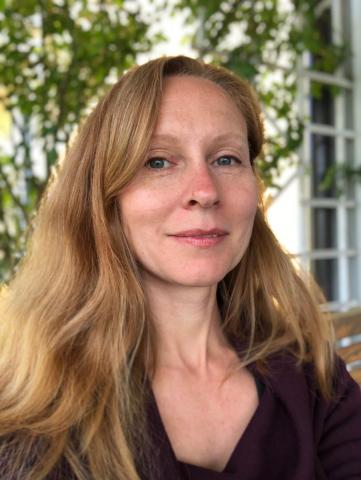 Email
EmailCatherine has a PhD in Art History (2011) and a master’s degree in Architectural History, both from the University of Virginia. She specializes in European medieval art and architecture, and in particular on the art and architecture of commemoration. She has taught courses on European medieval art and architecture, Byzantine art and architecture, the arts of the Islamic world, and art history surveys. Her publications have focused on her dissertation topic, episcopal tomb sculpture in medieval England, and she has a secondary research area in 18th- and 19th-century visual depictions of medieval buildings. Catherine also has work experience in arts administration and in historic preservation.
Mellon Indigenous Arts Program ->
Neal Rock
Assistant Professor, Studio Art
 Email
EmailNeal Rock is a Welsh-born visual artist based in Charlottsville, Virginia. He holds a BFA in painting from the University of Gloucestershire, UK; an MFA from Central Saint Martins School of Art & Design, London and a practice-based Ph.D. in painting from London’s Royal College of Art. With a visual art practice that encompasses interdisciplinary approaches to painting informed by histories of prosthetics, abstraction, embodiment and post-Humanism, he has exhibited extensively across Europe and the United States since the early 2000s. His work has been featured in commercial solo exhibitions in London, Amsterdam, Paris, New York and Los Angeles, and Rock has participated in international survey exhibitions at the Albright-Knox Art Gallery (Buffalo New York); the Contemporary Arts Museum (Houston); New York’s Storefront for Art & Architecture; London’s Royal Academy of Art and ICA amongst others. He was awarded a Grant Wood Painting Fellowship at the University of Iowa, alongside other residencies and fellowships including, MASS MoCA, Yaddo, VCCA and South Dakota State University.
Caroline Carter
PhD Candidate
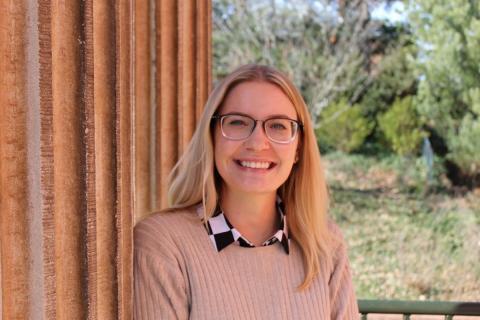 Email
EmailCaroline Carter is a 5th year Ph.D. candidate in the Program in Mediterranean Art and Archaeology studying Classical Archaeology under Dr. Tyler Jo Smith. Her research interests are interdisciplinary, focusing on ancient Greek religion and ritual (primarily during the Archaic and Classical periods), myth and iconography, animal studies, the archaeology of sacred landscapes, and the regions of Attica and Arcadia in Greece.
Her dissertation focuses on caves with archaeological and textual evidence for religious ritual activity in ancient Athens and its surrounding territory ca. 750-300 BCE. As part of this study, it incorporates a detailed analysis of the caves and their relationship to features in the natural and built environments in order to better understand how the caves operated individually and as a possible network of religious activity in the landscape. It is hoped that such an approach will deepen our already rich understanding of ancient Greek religion and its associated practices.
Caroline received B.A. degrees in Classics (Classical Archaeology) and Religious Studies (Ancient Religions) from the University of North Carolina at Chapel Hill in 2014. She also completed their Post-Baccalaureate Program in Classics in 2017. She received her M.A. in Classics (Classical Archaeology) from the University of Arizona in 2019 where she wrote her thesis entitled, “Theriomorphic Forms: Analyzing Terrestrial Animal-Human Hybrids in Ancient Greek Culture and Religion.”
She has participated on several excavations: Huqoq Excavation Project (Israel) (2011-12), Azoria Excavation Project on Crete (Greece) (2014), the Mt. Lykaion Excavation and Survey Project in Arcadia (Greece) (2018-2019), and the Caesarea Coastal Archaeological Project (Israel) (2022-present). She has also interned in curatorial departments at the North Carolina Museum of Art and Ackland Art Museum (UNC), working with collection material from the ancient Mediterranean, and co-curated an exhibition entitled, Pink, at the Ruffin Gallery (UVA).
From 2022-2023, Caroline was a Fellow in the Praxis Program for Digital Humanities at the UVA Scholars’ Lab.
During 2023-2024, she is the Jacob Hirsch Fellow at the American School of Classical Studies at Athens.
John J. Yiannias
Professor Emeritus
 Email
EmailDr. Yiannias is currently Professor Emeritus at the University of Virginia, teaching art history for over thirty years. Dr. Yiannias holds a Ph.D. in Early Christian and Byzantine Art from the University of Pittsburgh and works as the lead expert on Orthodox iconography. He has written and edited several works related to Byzantine art, including book The Byzantine Tradition after the Fall of Constantinople, an article on “Orthodox Art and Architecture” in A Companion to the Greek Orthodox Church, as well as several contributions to the Greek Orthodox Archdiocese of America’s website.
Marion Roberts
Professor Emerita
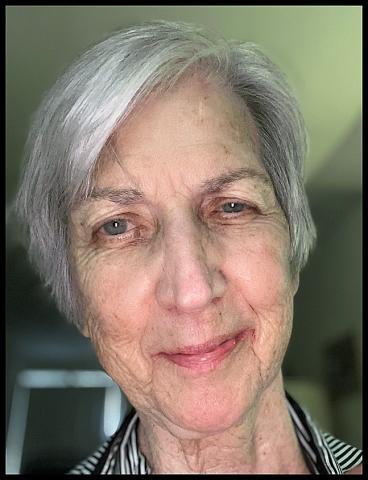 Personal Website
Email
Personal Website
EmailWhen Marion came to Virginia in September in 1968, she was the first of the new faculty members in Art History hired by Frederick Hartt. Marion was a familiar presence to generations of our undergraduate and graduate students as Professor of Medieval Art, and she capped her long career in the department with her service as Graduate Director for six years, a period that saw a significant strengthening of the Art History graduate program in every respect. Marion’s scholarly focus has long been English medieval art, and her concern with documenting buildings and monuments that have been altered, damaged, or destroyed over the centuries led her to study the seventeenth and early eighteenth=century antiquarian scholars of English medieval heritage. Her work on this material resulted first in the exhibition and catalogue at the University Art Museum, “The Emergence of Clarity:: Cathedrals Illustrated 1650-1850” (1988); then in the exhibition in Alderman Library Special Collections, “The Seventeenth-Century Restoration” (1993); and culminating in her book, Dugdale and Hollar: History Illustrated (University of Delaware Press, 2001). Marion has mad another major contribution to scholarship through her Salisbury Cathedral website (http://salisbury.art.virginia.edu). I strongly encourage you to log on to this website and spend some time exploring the immense photographic archive and its innovative manner of presentation. Marion and her husband, Robert Sargent, made the vast majority of the photographs themselves, and one important result of this labor is that the thousands of images are free of copyright and available to all. Over the decades, Marion played a major part in shaping the careers and ambitions of many scholars in the academic and museum worlds, who have commented on her careful attention to their writing, her sound advice, and her willingness to commit time to working with students closely and often. The fruit of Marion’s life and work is written in our students’ lives and careers, as well as in her own scholarship.
Bernie Frischer
Professor Emeritus
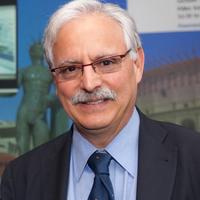 Personal Website
Email
Personal Website
EmailBernard Frischer is a leading virtual archaeologist and the author of seven printed books, three e-books, and dozens of articles on virtual heritage, Classics, and the survival of the Classical world. He is the founding editor of Digital Applications in Archaeology and Cultural Heritage, an innovative online, peer-reviewed journal where scientists can publish interactive 3D models.
Frischer received his B.A. summa cum laude in Classics from Wesleyan University (CT) in 1971 and his Ph.D. summa cum laude in Classics from the University of Heidelberg in 1975. He held a post-doctoral fellowship in Roman archaeology at the American in Academy in Rome from 1974 to 1976. Afterwards, he taught Classics and Roman Topography at UCLA from 1976 to 2004. From 2004 to 2013 he was Professor of Art History and Classics at the University of Virginia, where he was also founding Director of the Virtual World Heritage Laboratory. The lab’s mission is to apply 3D digital tools to simulating cultural heritage artifacts and sites as heuristic instruments of discovery. Since 2013 he has been a Professor of Informatics in the School of Informatics at Indiana University, where he continues to direct the Virtual World Heritage Laboratory.
He has been a guest professor at the University of Pennsylvania (1993), the University of Bologna (1994), Beijing Normal University (2009) and held the post of Professor-in-Charge of the Intercollegiate Center for Classical Studies in Rome (2000-01). Frischer is a member of Phi Beta Kappa, a Fellow of the Michigan Society of Fellows, a Fellow and trustee of the American Academy in Rome, and he has won research fellowships from the American Council of Learned Societies (1981, 1996), and the Center for Advanced Study in the Visual Arts (1997). Over the course of his career, he has garnered over $6 million in research funding, including multiple grants from the Andrew W. Mellon Foundation, the National Endowment for the Humanities, and the National Science Foundation.
From 1996 to 2003 he directed the excavations of Horace’s Villa sponsored by the American Academy in Rome, and from 1996 to 2004 he was founding director of the UCLA Cultural Virtual Reality Laboratory. The lab was one of the first in the world to use 3D computer modeling to reconstruct cultural heritage sites. Frischer has overseen many significant modeling projects, including Rome Reborn, the virtual recreation of the entire city of ancient Rome within the Aurelian Walls. Rome Reborn was the featured project at SIGGRAPH 2008, where it was prominently displayed at the entrance to the LA Convention Center. In recent years, he has focused on digitization and digital restoration of ancient sculpture, creation of a 3D restoration model of Hadrian’s Villa, and on using interactive models of historic monuments and the historically restored sky in archaeoastronomical research. His Virtual Meridian of Augustus Project is an example of the latter. Frischer not only develops scientific 3D models of cultural heritage, he also collaborates with The Khan Academy to use the models as assets in educational videos. With over 500,000 views since it was posted in 2012, the program he helped create on ancient Rome is by far Khan’s most popular arts and humanities video.
In 2005 Bernard Frischer was given the Pioneer Award of the International Society on Virtual Systems and Multimedia. In 2009, he was the recipient of the Tartessus Lifetime Achievement Prize from the Spanish Society of Virtual Archaeology. In 2010-11 he held the Senior Prize Fellowship of the Zukunftskolleg at the University of Konstanz, where since 2012 he has served as a member of the Scientific Advisory Board.
Malcolm Bell
Professor Emeritus
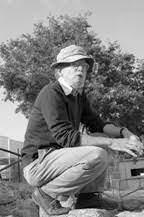 Email
EmailPaul Barolsky
Professor Emeritus
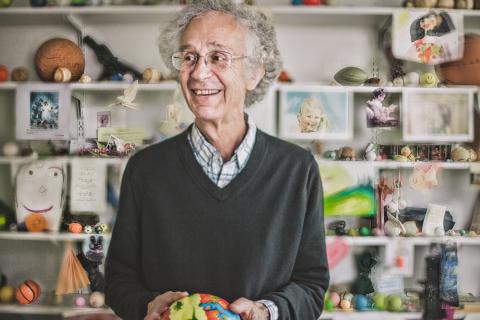 Email
EmailDetails from the early years of Paul Barolsky remain obscure. We know however that he has been teaching courses on Italian Renaissance art and literature at the University of Virginia since 1969. His books include Michelangelo's Nose, Why Mona Lisa Smiles, Infinite Jest, Michelangelo and the Finger of God, and A Brief History of the Artist from God to Picasso.
Chloe Downe Wells
PhD Candidate
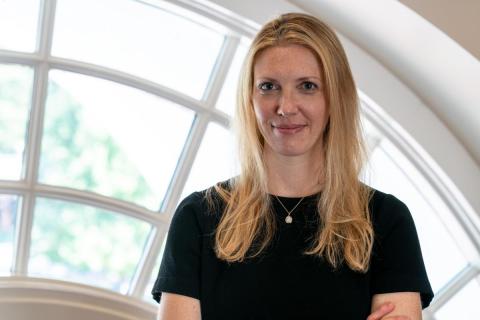
Lauren Van Nest
PhD Candidate
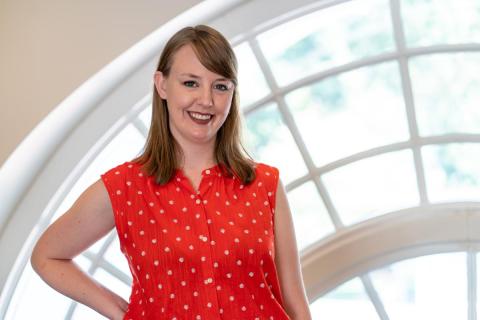 Email
EmailLauren Van Nest studies the art and architecture of medieval Europe with a particular focus on the rituals and material culture of the Latin Church. Her dissertation, titled “Sacral Performance & Extended Royal Bodies in Ottonian Bamberg: The Case of Henry II & Kunigunde (1002–1024),” examines the relationships crafted between objects of imperial patronage in the Ottonian Empire, their ritual environments, and the bodies of their patrons. Her research considers the role objects play in the formation of political identities and notions of empire.
She holds a B.A. from the University of North Carolina-Chapel Hill and an M.A. from the University of Toronto. Lauren has presented her research at the Leeds International Medieval Congress and the International Congress on Medieval Studies (Kalamazoo, MI). Her research has been supported by the Deutscher Akademischer Austauschdienst, Virginia Museum of Fine Arts, and Center for Global Inquiry + Innovation. She currently serves as a member of the Mentoring Program Committee of the Medieval Academy of America (2022-2025) and the Student Committee of the International Center of Medieval Art (2020-2023). Lauren has previously been a member of the Graduate Student Committee of the Medieval Academy of America (2020-2022), Executive Chair of the Art History Graduate Association (2019-2020), and Co-Chair of the UVA Medieval Colloquium (2018-2020).
Other professional interests include developing digital humanities projects analyzing and documenting the history of academic institutions, namely universities and professional organizations. As a 2019-2020 Praxis Fellow (Scholars’ Lab, University of Virginia Library), Lauren co-created a digital humanities project titled Land and Legacy. The project investigates the land development and expansion of the University of Virginia and University of Virginia Foundation throughout Charlottesville and Albemarle County since the 1980s. Since 2020, Lauren has served as the coordinator of the International Center of Medieval Art's Oral History Project. This podcast project features interviews between graduate students and ICMA members who have made significant contributions to the field of medieval art history and the ICMA.
Eleanore Neumann
PhD Candidate
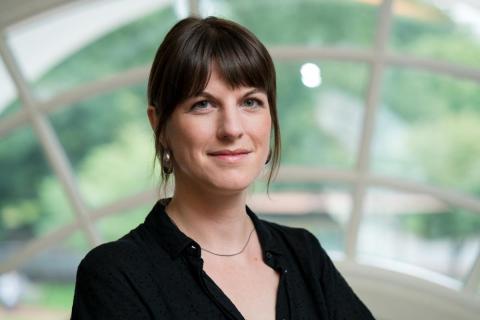 Email
EmailEleanore is a doctoral candidate in art and architectural history in the Department of Art at the University of Virginia. Under the direction of Professor Douglas Fordham, she is studying eighteenth- and nineteenth-century British art and visual culture. Her dissertation, The Global Landscapes of Maria Graham (1785-1842), examines the career of the British artist, travel writer, and naturalist Maria Graham and its implications for our understanding of women artists, British landscape, and empire. She has presented her research at conferences hosted by the Center for Advanced Studies in the Visual Arts, the Paul Mellon Center for Studies in British Art, and the International Congress on the Enlightenment, among others. Her project has been supported by numerous grants and fellowships, including from the Paul Mellon Centre, Jefferson Scholars Foundation, and The Huntington Library, Art Museum, and Botanical Gardens.
Throughout her career, Eleanore has also engaged with curation as a form of critical inquiry. She organized Breaking Ground: Printmaking in the U.S., 1940-1960 during a curatorial fellowship in the Department of Prints, Drawings, and Photographs at the Philadelphia Museum of Art. While at UVA, she has worked extensively with the Kluge-Ruhe Aboriginal Art Collection on contemporary Indigenous art from Australia. She co-curated Beyond Dreamings: The Rise of Indigenous Australian Art in the United States and for the catalogue she authored the first history of collecting contemporary Indigenous Australian art in the U.S. As a research assistant for the major touring exhibition Madayin: Eight Decades of Aboriginal Bark Painting from Yirrkala, she produced a timeline and bibliography to supplement the Indigenous-authored catalogue.
Presently, Eleanore is a Digital Humanities Fellow with the Scholars’ Lab at UVA. She is working with the Kluge-Ruhe to rethink how their collection can be presented online by first asking how Indigenous Australians want to both access and share objects related to their communities. The project builds on her experience as a Praxis Program Fellow in the Scholars’ Lab. She has also published her DH scholarship, including a collaboratively produced digital companion to the roundtable “Teaching the “Long” 18th Century” that appeared in a special issue of Journal18.
As part of her DH Fellowship, she is teaching the undergraduate course Crypto & the Museum. She previously led discussion sections for Art Since 1945 and Art and Money.
James Razumoff
PhD Candidate
 Email
EmailJames Razumoff (he/they) is a PhD Candidate in Program for Mediterranean Art and Archaeology studying under Dr. Fotini Kondyli. James’ research focuses on urban life of the Eastern Roman (Byzantine) empire, with a specific interest in human-environment relations and non-elite political agencies.
James’ dissertation, Political Ecology of the Eastern Roman City (6th to 9th centuries CE), examines the political life of cities through the decision-making of urban non-elites in response to environmental disasters, such as earthquakes, floods, and silting of harbors. The dissertation hopes to demonstrate that the cities’ ability to generate effective disaster response and crisis management techniques contributed to the survival of the empire into the 9th century.
At the University of Virginia, James is a graduate affiliate in the Environmental Humanities program. He had equally held numerous committee service positions, including Graduate Symposium in Art History, Art History Graduate Student Association (AHGA), and AGHA Committee on Land Acknowledgements. He is also a recipient of the department’s Teaching Excellence Award.
James received a B.A. in Classics with a minor in Law & Society from Cornell University in 2018. In 2019, he attended Classical Summer School of the American Academy in Rome (AAR). As a field archeologist, he worked in Doclea, Montenegro (2017) and Phanagoria, Russia (2021). For the 2022-2023 academic year, James is a Fellow at Koç University’s Research Center for Anatolian Civilizations (ANAMED) in Istanbul, Turkey.
Emma Langham Dove
PhD Candidate
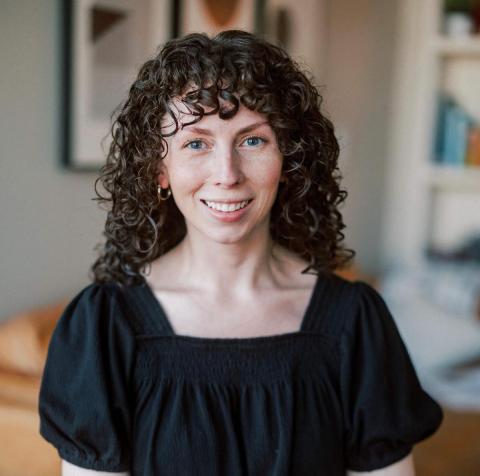 Email
EmailEmma Dove (she/her) is a doctoral candidate in Art History at the University of Virginia advised by Dr. Eric Ramírez-Weaver. Her dissertation, “Distributed Gender in Franco-Flemish Books of Hours: Conception, Compassion, and Cultivating the Pious Family,” brings together her interests in late-medieval prayer books, gender, spirituality, material culture, and the digital humanities.
Emma currently serves as the 2022-2023 Barringer-Lindner Fellow at the Fralin Museum of Art. She previously served as a Praxis Fellow in the digital humanities with the UVA Scholars’ Lab. In 2020, she received a New Horizons Research Grant from the Medieval Academy of America and a Double Hoo Award from the UVA Office of Undergraduate Research to create “Digitized Devotion,” a database comparing aspects of manuscript books of hours in the collections of the Albert and Shirley Small Special Collections Library, the J. Paul Getty Museum, the Morgan Library & Museum, and the Walters Art Museum.
Emma holds a Master of Arts in Religion from Yale Divinity School and the Institute of Sacred Music and a Bachelor of Arts in History and Literature from Harvard University. She is currently Co-Chair of the Graduate Student Committee of the International Center of Medieval Art and a Graduate Coordinator for the UVA Medieval Studies Program.
Abigail Bradford
PhD Candidate
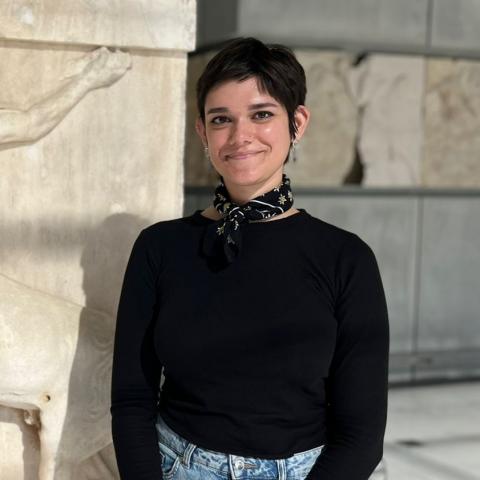 Email
EmailAbigail Bradford is a PhD candidate in the Program in Mediterranean Art and Archaeology studying under Dr. Tyler Jo Smith. Her research focuses on the visual representation of an ancient Greek musical genre called "New Music" in fifth-century BCE Athenian vase painting, drawing connections between the introduction of democracy in Athens and the development of the new musical genre. She is also interested in podcasting and sensory studies and has produced several podcasts on ancient Greek music, including a podcast titled "Fresh Beats From Snoop to Euripides" with a grant from the Religion, Race, and Democracy Lab at UVA (listen here).
Abigail graduated with honors from the College of William & Mary in 2017 with a degree in Classical Archaeology and Environmental Science. During her senior year, Abigail was a McIntyre Fellow of Curatorial Studies at the Muscarelle Museum of Art and assisted in curating the exhibition Fire and Clay: New Acquisitions of Chinese Antiquities. After graduating, Abigail continued to work at the Muscarelle and assisted in researching and writing exhibit content for Women with Vision: Masterpieces from the Permanent Collection and In the Light of Caravaggio: Dutch and Flemish Paintings from Southeastern Museums.
Abigail is participating in the American School of Classical Studies Academic Year Program as the James Rignall Wheeler fellow for the 2022-2023 academic year.
Richard Guy Wilson
Commonwealth Professor
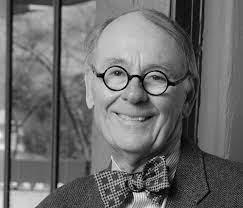 Personal Website
Email
Personal Website
EmailRichard Guy Wilson holds the Commonwealth Professor's Chair in Architectural History at the University of Virginia (Thomas Jefferson's University) in Charlottesville, Virginia. His specialty is the architecture, design and art of the 18th to the 21st century both in America and abroad. He was a visiting fellow at Cambridge University (England) in 2007.
He was born in Los Angeles---the home of everything new---and grew up in a house designed for his parents by the leading modernist Rudolph Schindler. He received his undergraduate training at the University of Colorado and MA and Ph.D. at the University of Michigan.
Wilson has received a number of academic honors, among them a Guggenheim fellow, prizes for distinguished writing, and in 1986 he was made an honorary member of the American Institute of Architects (AIA). He received the outstanding professor award at the University of Virginia in 2001. He has directed the Victorian Society’s Nineteenth Century Summer School since 1979 that has been located in Boston, Philadelphia and currently Newport, RI. He has served as an advisor and commentator for a number of television programs on PBS, A&E, and sixty-seven segments of America's Castles.
A frequent lecturer for universities, museums and professional groups, he has also published widely with many articles and reviews to his credit. Wilson has been the curator and author for major museum exhibitions such as The American Renaissance, 1876-1917, The Art that is Life: The Arts and Crafts Movement in America, The Machine Age in America, 1918-1941, The Making of Virginia Architecture, and Jefferson’s design for the University of Virginia. A major exhibit on the Colonial Revival will be at the Virginia Museum and other venues in 2015-16.
He is the author or joint author of 16 books that deal with American and modern architecture which include studies of McKim, Mead & White, Monument Ave in Richmond, the AIA Gold Medal, a contribution to the recent books on RM Schindler, and David Adler, and principle author and editor of the Society of Architectural Historians book, Buildings of Virginia: Tidewater and Piedmont (2002). His The Colonial Revival House was published in the fall of 2004, Harbor Hill: Portrait of House in 2008, and Thomas Jefferson’s Academical Village was reissued in a new edition in 2009 and the University of Virginia Campus Guide in 2012. Also published in 2012 was Edith Wharton at Home: Life at the Mount, which treats the architectural interests and contributions of one of America’s leading writers.
Lisa Reilly
Commonwealth Professor of Architectural History
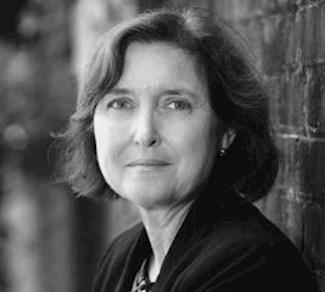 Personal Website
Email
Personal Website
EmailLisa Reilly's chief research interest is in the history of Norman architecture in England, France and Italy. She published a monograph on Peterborough Cathedral with Oxford University Press in the series Clarendon Studies in the Fine Arts. Ms. Reilly publishes and lectures chiefly on Norman architecture and is currently completing a book on Norman visual culture throughout the Romanesque world. Together with Karen Van Lengen, Ms. Reilly wrote Campus Guide: Vassar College for Princeton Architectural Press. Ms. Reilly is a leading early user of digital humanities technology in teaching and research. She was a resident fellow at the Institute for Advanced Technology in the Humanities at the University of Virginia (2006-08). Her ongoing research project investigates the medieval design process using digital analysis (http://www.medievalarchitecture.org/). With a grant from the Academy of Teaching at the University of Virginia, Ms. Reilly led the development of a faculty group dedicated to investigating and implementing digital humanities tools for use by undergraduates in courses at the University during 2012-13. Her students in her newly designed course On Hajj with Ibn Jubayr: Reconstructing the 12th Century Mediterranean, created digital exhibitions using Neatline (www.neatline.org). Their work can be seen at http://ibnjubayr.neatline-uva.org. Many of her graduate students also implement digital tools in their research. One, Ed Triplett, was recently highlighted in the Chronicle of Higher Education (http://.com/article/3-PhD-Candidates-Who-Are/137223/).
Ms. Reilly teaches survey lectures in the Department of Architectural History as well as upper level courses on early and later medieval architecture, which include a broad spectrum of architectural topics such as urban planning, vernacular architecture, the medieval Mediterranean and lay piety as well as ecclesiastical and secular monuments. She was recently awarded a hybrid challenge grant by the Office of the President to redesign the architectural history survey using digital tools. Recent graduate seminars include Lay Piety in the Later Middle Ages, Norman Art and Architecture, Sicily, From Roman to Romanesque, the Concept of the Medieval, and Durham Cathedral. Ms. Reilly held the NEH/Horace Goldsmith Distinguished Teaching Chair of Art and Architectural History from 1999-2002 and frequently offers workshops on teaching. She is on the faculty of the joint graduate program in art and architectural history. Ms. Reilly was the editor of the journal Gesta (2009-12) and is a fellow of the Society of Antiquaries of London. She will be the Fulbright Fellow in the History of Art at the University of York in spring 2015 where she will be researching the stained glass of the parish church of St. Michael le Belfrey. She is the 2014 Bonnie Wheeler Fellow.
Louis P. Nelson
Professor; Vice Provost for Academic Outreach
 Personal Website
Email
Personal Website
EmailLouis Nelson is Professor of Architectural History and the Vice Provost for Academic Outreach in the Office of the Provost. He is a specialist in the built environments of the early modern Atlantic world, with published work on the American South, the Caribbean, and West Africa. His current research engages the spaces of enslavement in West Africa and in the Americas, working to document and interpret the buildings and landscapes that shaped the trans-Atlantic slave trade. He has a second collaborative project working to understand the University of Virginia as a landscape of slavery. Nelson is an accomplished scholar, with two book-length monographs published by UNC and Yale University Presses, three edited collections of essays, two terms as senior co-editor of Buildings and Landscapes--the leading English language venue for scholarship on vernacular architecture--and numerous articles. He is also a celebrated teacher, having won a university-wide teaching award in 2007 and serving as the 2008 UVA nominee for a state-wide Outstanding Faculty Award. Nelson's teaching and research focuses on the close examination of evidence-both material and textual-as a means of interrogating the ways architecture shapes the human experience. The majority of his work focuses on the early American South, the Greater Caribbean, and the Atlantic rim. His early work on colonial religious architecture is best realized in his monograph, The Beauty of Holiness: Anglicanism and Architecture in Colonial South Carolina (UNC, 2008). Winner of the 2010 SESAH Best Book of the Year Prize, The Beauty of Holiness examines the ways Anglican churches in colonial South Carolina-the nexus of many social landscapes-express regional identity, social politics, and divergent theologies of the sacred. "Sensing the Sacred: Anglican Material Religion in Early South Carolina," published in the Winterthur Portfolio, was also recognized for its contributions to the field of architectural history; it was named the 2008 SESAH best article of the year. His interest in the colonial South then led him past the "sacred 13" colonies. For a decade her served as the director of a summer field program in Falmouth, Jamaica, popularly referred to as the Falmouth Field School. One by product of this work is the Falmouth Project, a GIS-based data information system used as a repository for ongoing work in Falmouth. Working together with more than one hundred students over more than 10 years, his fieldwork in Jamaica and the Leeward Islands has resulted in some of the first systematic recording of eighteenth and nineteenth-century architecture in the British Caribbean.
In the summer of 2011, Nelson chaired the annual meeting of the Vernacular Architecture Forum in Falmouth. His commitment to the value of the object as evidence and the necessity for first-hand examination of the built environment has resulted in numerous trips with graduate students across the American South and the Caribbean. Working together with archaeologists, Nelson is interested in using buildings to explore Afro-Caribbean culture through the transition from slavery to freedom. The work of the decade-long Falmouth Field School in Historic Preservation has recently appeared in Falmouth, Jamaica: Architecture as History, a volume published by the University of the West Indies Press. In addition to individual short illustrated student-generated essays on nearly 100 buildings in the community, this collection introduces the history of the town, the significance of its architecture, and the complicated impact of heritage tourism on its preservation. His most recent book, Architecture and Empire in Jamaica (Yale University Press), an intensive examination of the architecture of the island, has been awarded the 2017 John Brickerhoff Jackson Prize and the 2017 Abbott Lowell Cummings Prize. Framed around the themes of violence, empire, and identity, the book's nine chapters carefully investigate the power of architecture in everyday life and Jamaica's place in the burgeoning British empire of the eighteenth century.
With the examination of Jamaica now published in two volumes, Nelson is turning his research and writing interests to the maritime edges of the Atlantic, examining the southern American colonies as a componet of the interconnected early modern Atlantic rim ranging from West Africa to the Caribbean and the port cities of Britain. His current research interests are best exemplified in his recent article, "Architectures of West African Enslavement," winner of the 2015 Bishir Prize for excellence in Vernacular Architecture and Cultural Landscapes. Appearing in Buildings and Landscapes, this article examines the spaces that collectively produced the commodity of "the slave." His work to document and preserve spaces of enslavement in Africa has led to his work in partnership with Sites of Conscience at the House of the Slaves in Senegal. Listeners can find a radio interview about his work here.
He is also coeditor of a forthcoming volume on the spaces of slavery at Thomas Jefferson's Academical Village and has been a vocal supporter of the intiative to erect a monument to the Univeristy's enslaved populations; for a brief public speech on this subject see this video. In the Fall of 2015 he taught an intensive Field Methods course on the spaces at the University for this project.
But Nelson's research scope is wide-ranging. He has also edited, together with Maurie McInnis, Shaping the Body Politic: Art and Political Formation in Early America (Virginia, 2011) an examination of the role of visual culture in the formation of a national body politic. And he is also engaged in research and teaching on theories and practices of sacred space. In this field, he has published American Sanctuary: Understanding Sacred Spaces (Indiana, 2006), a collection of essays that examines the place of the sacred in the American landscape and a number of articles and essays in scholarly journals.
Nelson's courses include World Vernacular Architecture, Early American Architecture, Sacred Space, Field Methods in Historic Preservation, and Arts and Cultures of the Slave South, among others.
Shiqiao Li
Weedon Professor, Architectural History
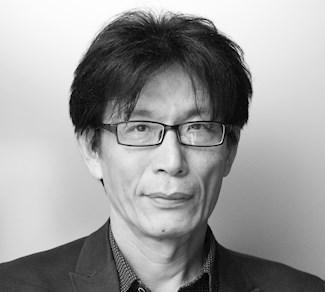 Personal Website
Email
Personal Website
EmailShiqiao Li took up his position in 2012 as Weedon Professor in Asian Architecture, School of Architecture, University of Virginia, where he teaches and researches into emerging issues in contemporary Chinese cities. This adds to a teaching portfolio which includes history and theory courses and design studio instruction; under his studio instruction, his students won several first prizes in international student design competitions, and were nominated and shortlisted for RIBA President’s Medal. He studied architecture at Tsinghua University in Beijing and obtained his PhD from AA School of Architecture and Birkbeck College, University of London. Li practiced architecture in London and Hong Kong, and initiated design proposals which were published and exhibited in journals and international exhibitions. His writings appeared in:Bauwelt, Domus China, World Architecture, Cultural Politics, Theory Culture & Society, Cultural Studies(Wenhua Yanjiu), The Journal of Architecture, Journal of Architectural Education, Architectural Theory Review, Fabrications: The Journal of the Society of Architectural Historians, Australia and New Zealand, and Journal of Society of Architectural Historians. His books include Understanding the Chinese City(London: Sage, 2014), Architecture and Modernization (xiandai sixiang zhong de jianzhu, Beijing, 2009) andPower and Virtue, Architecture and Intellectual Change in England 1650-1730 (London and New York: Routledge, 2007). He is External Examiner for PhD degrees at the RMIT University and University of New South Wales, International Judge for RIBA President’s Medal for Dissertations in 2006. He was keynote speaker at University of Johannesburg, RMIT University, Melbourne University, Southeast University, Peking University, Beijing Normal University, and lectured at University of Virginia, University of Sheffield, Bartlett School London, University of Tokyo, CEPT University Ahmadabad, University of Pennsylvania, Harbin Institute of Technology, Tsinghua University, Nanjing University, University of Queensland, and University of New South Wales. Prior to coming to Virginia, he taught at AA School of Architecture, National University of Singapore and The Chinese University of Hong Kong.
Yunsheng Huang
Associate Professor, Art History
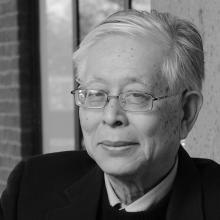 Personal Website
Email
Personal Website
EmailFollowing the completion of his PhD, Mr. Huang first served as a research fellow at Cornell University and then came to teach full-time here at the University. Mr. Huang's courses include a survey of World Buddhist architecture, a seminar on urban development in East Asia since World War II, and East-West architecture. His research interests focus on the cross-cultural issues in architecture and architectural interactions between the East and the West. His course of comparative architecture is an effort to explore a comparative methodology in architectural history. In addition, the new class "Drawing of Historic Architecture" provides students with training and skills of free hand drawing mainly of historic buildings.
Sheila Crane
Associate Professor, Architectural History
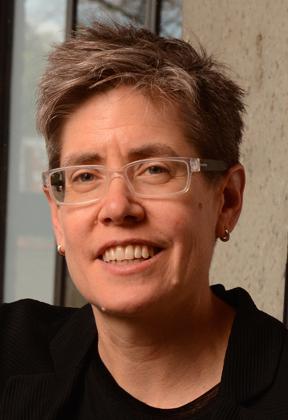 Personal Website
Email
Personal Website
Email
Sheila Crane has a long-standing interest in the history and theory of modern architecture and cities, particularly in Europe, North Africa, and the Mediterranean region. She is the author of Mediterranean Crossroads: Marseille and Modern Architecture, published by the University of Minnesota Press in 2011 with the support of a grant from the Graham Foundation for Advanced Studies in the Fine Arts. Her book received the 2013 Spiro Kostof Book Award from the Society of Architectural Historians. Since September 2011, she has been a member of the Editorial Board of the Journal of Architectural Education, and she co-edited the “Design+” special issue, to be published in April 2014, with Marc Neveu and Amy Kulper. Her current research explores how urban landscapes in France and Algeria were transformed during the long struggle for independence and its continuing aftermath. Recent publications include “Rewriting the Battle of Algiers: Ephemeral Tactics in the City at War,” forthcoming in Space and Culture; “Material Occupations,” in Otherwise Occupied: Bashir Makhoul, Aissa Deebi, an exhibition catalogue accompanying the Palestinian art exhibition at the 2013 Venice Biennale; "The Shantytown of Algiers and the Colonization of Everyday Life," in Use Matters: An Alternative History of Architecture (Routledge, 2013); “On the Edge: The Internal Frontiers of Architecture in Algiers/Marseille,” published in the Journal of Architecture in December 2011. Previous publications have examined the dynamics of memory and forgetting in postwar and postcolonial contexts, new conceptions of historic preservation that emerged during the rebuilding of cities after World War II, the movements of architects and translations of built forms between Marseille and Algiers, and how everyday processes of occupying and appropriating space have shaped cities and their inhabitants.
Crane has held fellowships at the Canadian Centre for Architecture in Montreal (2006), the Shelby Cullom Davis Center for Historical Studies at Princeton University (2004–2005), and the Camargo Foundation in Cassis, France (1998). She has also been a recipient of a Research Grant from the Graham Foundation for Advanced Studies in the Fine Arts, a Franklin Research Grant from the American Philosophical Association, a Chateaubriand Fellowship from the Cultural Service of the Embassy of France and a Samuel H. Kress Travel Fellowship in the History of Art. In spring 2015, she will be a Fellow in residence at the Clark Art Institute in Williamstown, Massachusetts, where she will be working on her current book project, Inventing Informality, which reconsiders the bidonville (shantytown)––as urban form, subject of visual representation, site of knowledge production, and object of social and spatial reengineering.
Awarded a University Teaching Fellowship for the academic year 2008–2009, Crane regularly teaches the history of architecture and urbanism from the 15th century to the present as well as the history of modern architecture and theories & methods in architectural history. Recent seminar offerings include Mediterranean Cities, Memory & Architecture, The Spaces of the Modern City, Transnational Modernisms, and 1968 – Architecture, Urban Space, and the Politics of Everyday Life. Prior to joining the faculty at UVa in 2007, Crane taught in the History of Art and Visual Culture Department at the University of California, Santa Cruz.
Dorothy C. Wong
Professor, Art History
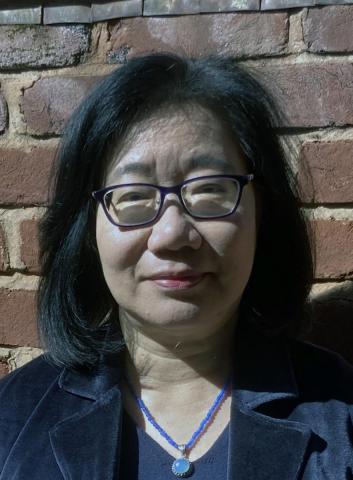 Personal Website
Email
Personal Website
EmailCurriculum Vitae
Dorothy C. Wong is currently Professor of Art History at the University of Virginia. Specializing in Buddhist art of China during the first millennium CE, her research addresses topics of art in relation to religion and society, and of the relationship between religious texts/doctrine and visual representations. In addition to many articles, she has published Chinese Steles: Pre-Buddhist and Buddhist Use of a Symbolic Form (2004; Chinese edition 2011), Hōryūji Reconsidered (editor and contributing author, 2008) China and Beyond in the Medieaval Period: Cultural Crossings and Inter-regional Connections (co-editor with Gustav Heldt, and contributing author, 2014), Buddhist Pilgrim-Monks as Agents of Cultural and Artistic Transmission: The International Buddhist Art Style in East Asia, ca. 645–770 (2018; Chinese edition forthcoming), Miraculous Images in Asian Traditions, vol. 50 of Ars Orientalis (editor and contributing author, 2020), and Dynamics of Interregional Exchange in East Asian Buddhist Art, 5th-13 Century (editor and contributing author, 2022). Currently she is working together with about two dozen international scholars researching the topic of “miraculous images” in global perspectives, trying to understand what “miracles” mean in different cultures and how and when people ascribe material objects with spiritual agency. She is also completing a book manuscript entitled The First Image of the Buddha.
Elizabeth Hutton Turner
University Professor, Art History
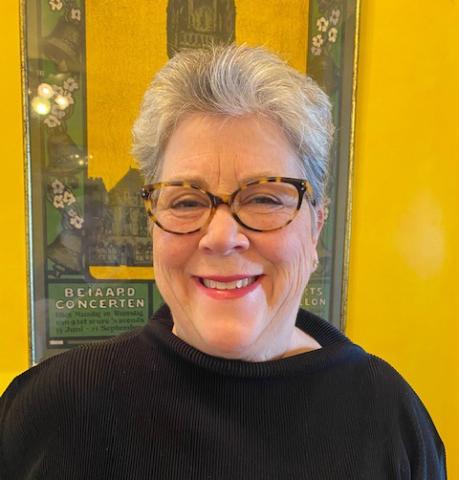 Email
EmailCurriculum Vitae
Elizabeth Hutton Turner since 2007 University Professor in the Department of Art, University of Virginia (UVA). In that same year she was appointed to a five year term establishing new office and programs as the first Vice-Provost for the Arts for the University.
Prior to her move to Charlottesville in 2007, Turner served as senior curator at the Phillips Collection in Washington, DC, where she helped establish an interdisciplinary Center for the Study of Modern Art, and organized more than twenty-five exhibitions including: “Arthur Dove: A Retrospective” (1997), “Georgia O’Keeffe: The Poetry of Things” (1999), “Over the Line: The Art and Life of Jacob Lawrence” (2001), “Pierre Bonnard: Early and Late”(2002), “Calder/Miro: A New Space for the Imagination” (2004), “Klee and America”(2006), “Georgia O’Keeffe: Abstraction” (2009).
Turner has served as an advisor, panelist, consultant, and board member for numerous organizations, among them, Howard University, The National Endowment for the Humanities and The Calder Foundation.
In January 2013, after completing her term as Vice Provost for the Arts, Beth went on leave from the University, establishing a new position as Vice President for Collections and Curatorial Affairs at the Terra Foundation for American Art.
Since January 2015 she has returned to full-time teaching at the University where she has launched a series of courses in object-based research related to experiential learning and new exhibitions she has guest-curated national and international touring shows including a Calder Retrospective at the Museum of Fine Arts Montreal and the Struggle series reunion for Peabody Essex Museum. Current writing projects include “Unexpected O’Keeffe” and “Alexander Calder: a Biography of Objects.”
Tyler Jo Smith
Professor of Classical Art & Archaeology; Director of the Interdisciplinary Archaeology Program
 Email
EmailTyler Jo Smith (Professor, Department of Art) is a Classical Archaeologist who specializes in ancient Greek figure-decorated pottery, and images of performance and ritual in Greek and Roman art. She is the author of Komast Dancers in Archaic Greek Art (2010) and the co-editor of A Companion to Greek Art (with D. Plantzos, 2012), and Religion in the Art of Archaic and Classical Greece (2021). Although she was introduced to invertebrate paleontology at a very young age – digging in the Arbuckle Mountains in south-central Oklahoma – her research area has long been focused on the Mediterranean world. She has participated on field surveys in southwest Turkey, excavations at Knossos (Crete), Kato Phana (Chios), and Thebes in Greece, and at Morgantina in central Sicily. Currently, she serves as Lab Director and Director of Academic Programs for the Caesarea Coastal Archaeology Project (Israel), where she also co-directs the fieldschool. With Ethan Gruber, she co-founded Kerameikos.org, a linked open data project for Athenian pottery funded by the NEH, and also heads the 3D-GV cohort focused on scanning and printing the Greek vase collection and other antiquities at the Fralin Museum of Art at UVA.
Dr Smith serves as the Director of UVA’s Interdisciplinary Archaeology Program (2011-17, 2019-present) and the Coordinator of the Mediterranean Archaeology PhD program. Her courses include Introduction to Classical Archaeology, Greek Art and Archaeology, Anatolian Archaeology, Art and Devotion, and Theory of Classical Archaeology. She has received both national and local teaching awards, including the Z Society Distinguished Faculty Award in 2022. For the academic year 2018-2019, she was appointed Elizabeth A. Whitehead Professor at the American School of Classical Studies at Athens. Dr Smith’s current research is concerned with the art and archaeology of alcohol across the ancient world, the representation of animals in Greek religion, archaeology and fiction, and contextual readings of ancient Greek pottery. She currently serves as President of the Charlottesville AIA.
Christa Noel Robbins
Associate Professor, Art History
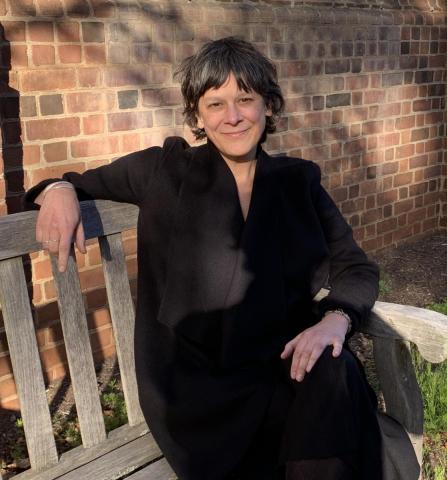 Personal Website
Personal Website
Christa Noel Robbins is a scholar of twentieth and twenty-first-century art and criticism. Noel Robbins joined the University of Virginia faculty in 2015. Before coming to UVa she was the Mellon Caltech-Huntington Postdoctoral Instructor in Art History at the California Institute of Technology. She recently published a book with the University of Chicago Press, titled Artist as Author: Action and Intent in Late-Modernist American Painting, which offers the first extended study of authorship in mid-20th century abstract painting in the US. She was the advisory editor of North American modernism for the Routledge Encyclopedia of Modernism and her publications can be found in several journals including the Oxford Art Journal, Criticism, Art in America and Critical Inquiry.
Eric Ramírez-Weaver
Associate Professor, Art History
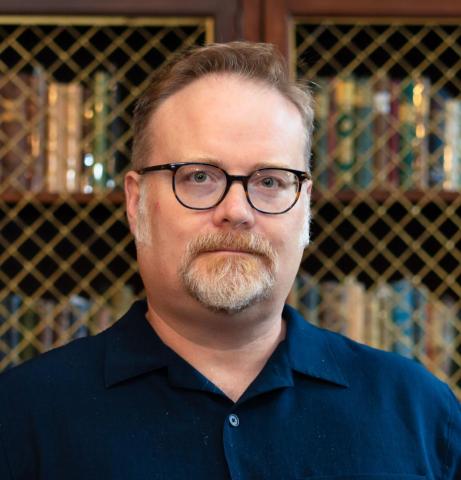 Email
EmailI study the theological, philosophical, and scientific ideas that informed the creative decisions of artists living in eastern and western medieval cultures from the third to fifteenth centuries. Recent and forthcoming publications explore the intersection of art and science manifest by astronomical and philosophical illuminated manuscripts. Primary research interests include Carolingian manuscript illumination and late-Gothic painting at the Bohemian court in Prague.
My first book project, Saving Science: Capturing the Heavens in Carolingian Manuscripts will be available from Pennsylvania State University Press by January 2017. In that volume, I examine the complex processes of inspiration and acculturation at play in one luxury copy of an illustrated astronomical encyclopedia referred to as the Handbook of 809, assessing the significance of classically inspired, celestial imagery for a ninth-century Frankish prelate such as Bishop Drogo of Metz. In addition, the book offers a revisionist approach to the study of early medieval astronomical manuscripts, grounding the discussion in the various forms of artistry on display in medieval books. This project has benefited from generous financial support, including numerous grants from the University of Virginia, assistance from the Millard Meiss Publication Fund of the College Art Association, and a Samuel H. Kress Foundation Research Grant conferred in conjunction with the International Center of Medieval Art. A related essay, "Classical constellations in Carolingian codices: investigating the celestial imagery of Madrid, Biblioteca Nacional, MS 3307," appeared in an anthology from Ashgate, Negotiating Secular and Sacred in Medieval Art: Christian, Islamic, and Buddhist.
A second book project presently underway, Signs of Power: Astrology, Cosmology, and Philosophy in Late Medieval Prague, celebrates late medieval illuminated manuscripts devoted to astrology, astronomy, cosmology, and technology, which during a period of crisis for Wenceslas IV of Bohemia, arose like alchemical gold from the ashes. Two recent essays representative of these interests include, "Reading the Heavens: Revelation and Reification in the Astronomical Anthology for Wenceslas IV," Gesta 53.1 (2014), and "'So that you can understand this better': Art, Science, and Cosmology for Courtiers in William of Conches' Dragmaticon Philosophiae," Diagramm und Text, Diagrammatische Strukturen und die Dynamisierung von Wissen und Erfahrung, Überstorfer Colloquium 2012, ed. by Eckart Conrad Lutz, Vera Jerjen, and Christine Putzo (Wiesbaden: Reichert Verlag, 2014). The book, Signs of Power, is being drafted during the 2015-16 academic year at the Institute for Advanced Study in Princeton.
Amanda Phillips
Associate Professor, Art History
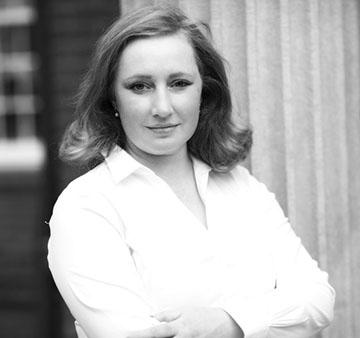 Email
EmailI am Associate Professor of Islamic Art and Material Culture, having joined the Department of Art in 2015 as Assistant Professor after positions at the University of Birmingham and the Museum of Islamic Art in Berlin. My first book, Everyday Luxuries, was published with the National Museums of Germany in 2016; it explored the circulation of art and objects in the Ottoman capital of Istanbul in the years between 1600 and 1800. The book argued, among other things, that the consumption habits of men and women in Istanbul drove the production of textiles, ceramics, metalware, woodwork, and other crafts, as well as the arts of the book. While these categories of objects form the bulk of many museum collections, they are often neglected by both scholars and curators. Everyday Luxuries proposed new ways of seeing, studying, and exhibiting them, also moving Islamic art history beyond its traditional focus on the uppermost elites.
My second monograph, Sea Change, published in 2021 with the University of California Press, explored Ottoman textiles from both a global and interdisciplinary perspective, uniting the eastern Mediterranean with the Indian Ocean on one hand, and social and economic history with art history, technical studies, and global history on the other. It also insists on a more comprehensive history of textiles, arguing that the plain, the non-canonical, the well-worn, and the downright mediocre are necessary parts of an expanded topography, and deserve treatment on their own terms. Artisans made decisions as the worked, and the book also returns agency to the men and women earning their livings in the textile sector. It shows how they coped with economic hardship and technological change, as well as how they resisted regulations imposed by the central authorities.
As an active researcher whose scholarship relies on close analysis of objects, I continue to work in museums across the US, Europe, and the Middle East, with occasional visits to South and East Asia. Using collections in Greece, Turkey, the UK, and the US, my third project will focus on the global language of flowers in the golden age of botany, as seen in textiles and other crafts. It will draw a through-line from the high arts and literature of the Ottoman court to vernacular modes of decoration, with a focus on textiles made and used by women.
My research has been supported by the Fulbright Commission, the National Endowment for the Humanities, the Max Planck and Marie Curie Foundations, the Gerda Henkel Stiftung, the British Academy, the Barakat Trust for Islamic Art, the Calouste Gulbenkian Museum in Lisbon, the Pasold Foundation for Textile Research, the Clarendon Bursary at the University of Oxford, and the Doris Duke Foundation for Islamic Art in Honolulu, among other sponsors.
At UVa, I am Affiliated Faculty at the Department of Middle Eastern and South Asian Languages and Cultures and the director of Diversity, Equity, and Inclusion at the Department of Art, and am currently teaching in the College Fellows Program, part of the Engagements curriculum for first year undergraduates. I continue to offer a comprehensive history of the art and architecture of the Islamic world in the spring of each year and occasionally advise Distinguished Major’s Papers. Students interested in graduate study of the material culture of the Islamic world, and the Ottoman Empire especially, are invited to email me to discuss admission to the doctoral program in Art and Architectural History.
Giulia Paoletti
Associate Professor, Art History
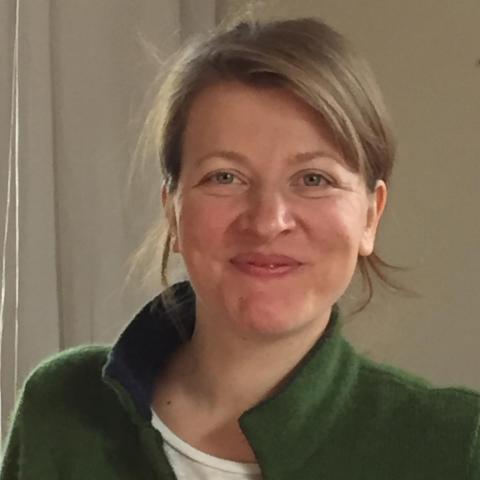 Email
EmailAffiliated Faculty Member of the Department of African American and African Studies / Woodson Institute (2023-26), Affiliated Faculty Member of the French Department
Giulia Paoletti is a historian and curator of art and photography with a focus on nineteenth and twentieth century African art. Her book Portrait and Place: Photography in Senegal, 1840-1960 (Princeton University Press, 2024) offers the first extended study of photography in one of Africa’s epicenters of modernity. The book was awarded the 2024 Photography Network Book Award.
Her work has appeared in edited volumes and journals including Art History, Cahiers d'études africaines, the Metropolitan Museum Journal, Art in Translation, Journal of African History, Troubles dans les collections and African Arts and MoMA Post.
Support for her research and writing include awards and fellowships from American Council of Learned Societies (ACLS)/Getty; The Arts Council of the African Studies Association (ACASA); the National Museum of African Art, Smithsonian; the Metropolitan Museum of Art; and the Museum of Fine Arts in Houston.
She has co-curated three exhibitions on historical and contemporary photography from Africa at the Metropolitan Museum, the Wallach Gallery and Dak’art Biennial OFF 2018.
She has taught and lectured at Columbia University, Pratt Institute, the University of Kansas, the Barnes Foundation, and the University of Bologna. At UVA, Paoletti teaches undergraduate and graduate classes on Africa’s histories of photography, modern and contemporary art, classical arts and exhibition histories.
Currently, with Dr. Sandrine Colard, she is working on her second research project on the relation between photography and textile.
She is the co-director of the The Siren Project
A full list of publications is available here: https://virginia.academia.edu/GiuliaPaoletti.
Fraser D. Neiman
Lecturer, Archaeology
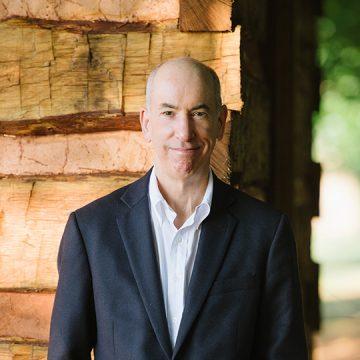 Personal Website
Email
Personal Website
EmailMy current research focuses on the archaeology of the slave societies that evolved in the Chesapeake and Caribbean in the early-modern era. In addition to teaching in the anthropology and architectural history departments at UVA, I am director of archaeology at Monticello, where my department is in the midst of several long-term research projects. Among them is the Monticello Plantation Archaeological Survey, a multidisciplinary initiative designed to reveal trajectories of change in settlement and land use on Thomas Jefferson’s Albemarle County plantation, along with their ecological, economic, and social causes and consequences.
Monticello's archaeology department is also home to the Digital Archaeological Archive of Comparative Slavery (DAACS), a collaborative venture that uses the web to facilitate sharing and comparative analysis of fine-grained archaeological data from sites occupied by enslaved Africans and their descendents in North America and the Caribbean. My Caribbean research is a collaboration with DAACS colleagues, and focuses differences in plantation organization and market participation by slaves on Jamaica and Nevis.
Evolutionary perspectives on learning, cognition, and behavior provide the theoretical inspiration for much of my empirical work. Topics of particular interest include style, markets, consumption, and cooperation. I'm also interested in quantitative techniques, particularly multivariate and spatial data analysis.
My course syllabi and some recent papers are available on my personal home page: http://people.virginia.edu/~fn9r/
Specializations
Colonial North America and the Caribbean, vernacular architecture, archaeological theory, quantitative techniques, GIS, digital research archives.
Selected Publications
Forthcoming - Measuring Time, Population, And Residential Mobility From The Surface At San Marcos Pueblo, North Central New Mexico. American Antiquity. (With Ann F. Ramenofsky and Christopher D. Peirce).
2011 - Measuring Time, Population, And Residential Mobility From The Surface At San Marcos Pueblo, North Central New Mexico. American Antiquity. (With Ann F. Ramenofsky and Christopher D. Peirce).
2008 - The Lost World of Monticello: An Evolutionary Perspective. Journal of Anthropological Research 64 (2):161-193.
2007 - Frequency Seriation, Correspondence Analysis, and Woodland-Period Ceramic Assemblage Variation in the Deep South. Southeastern Archaeology 26 (1):47-72.
2007 - Inheritance and Adaptation: Archaeological and Architectural Perspective on the 17th Century Chesapeake. William and Mary Quarterly 64 (3):451-520. (With James Whittenburg, Carter Hudgins, Willie Graham, and Carl Lounsbury).
2000 - Coincidence or Causal Connection? The Relationship Between Thomas Jefferson’s Visits to Monticello and Sally Hemings’s Conceptions. William and Mary Quarterly 56 (1):198-210.
1997 - Conspicuous Consumption as Wasteful Social Advertising: A Darwinian Perspective on Spatial Patterns in Classic Maya Terminal Monument Dates. In Rediscovering Darwin: Evolutionary Theory in Archaeological Explanation. G. Clarke and M. Barton, eds. Pp. 267-290. Archaeological Papers of the American Anthropological Association.
1995 - Stylistic Variation in Evolutionary Perspective: Inferences from Decorative Diversity and Inter-Assemblage Distance. American Antiquity 60 (1):1-37.
1993 - Temporal Patterning in House Plans from the 17th-Century Chesapeake. In The Archaeology of Seventeenth-Century Virginia. T. Reinhart and D. Pogue, eds. Pp. 251-284.
Melissa Jordan Love
Affiliated Faculty and Academic Curator, The Fralin Museum of Art
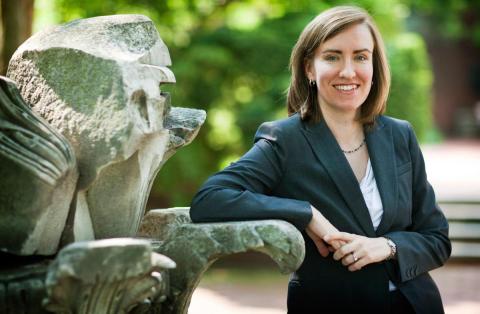 Email
EmailOffice hours: by appointment
In 2012, The Fralin Museum of Art appointed art historian Melissa Jordan Love as the Museum's first full-time academic curator. The position, funded by a three-year, Andrew W. Mellon Foundation Grant, aims to strengthen the museum's curatorial and academic programming mission as a teaching institution. Love develops educational programming around the Museum's exhibitions to enhance the learning of students at the University and the public's understanding of art.
She also plays an essential role in developing initiatives that integrate the museum with innovation in the humanities across the University, including the Mellon Indigenous Arts Program. Love also has a joint appointment in the College of Arts & Sciences' McIntire Department of Art, where she teaches from time to time, and she participates in the Institute of the Humanities & Global Cultures.
Love earned a Ph.D. in art history in May 2012 from Columbia University, where she focused on medieval art and architecture and the development of towns in southwest France during a time of large-scale town planning. She earned a bachelor's degree in art history and economics at Wellesley College in Wellesley, Mass.
She honed her passion for museum education experience at the Worcester Art Museum in Worcester, Mass., where she was a curator, and The Sterling and Francine Clark Art in Williamstown, Mass., where she said the opportunity to be involved in education, marketing and press efforts expanded her role and interaction with the collections and exhibits and her goal of making art accessible.
"Most museum experience is curatorial," Love said. "Working at smaller museums, you wear many hats. I like working directly with art and getting people interested in art. At U.Va., I have an opportunity to get back into the museum and academic world, too."
As academic curator, Love's responsibilities include:
- Teaching graduate and undergraduate courses in the McIntire Department of Art and the College's new Institute of the Humanities & Global Cultures in conjunction with exhibitions and leading seminars that produce new knowledge about objects in the museum's collection;
- Working directly with members of the University faculty to include the museum's temporary exhibitions and permanent collections in their classroom activities;
- Organizing exhibitions for the museum with direct connection to and in collaboration with research interests of faculty and students in diverse departments;
- Managing a new, for-credit student internship initiative in partnership with the Global Development Studies Program and the University's Kluge-Ruhe Aboriginal Art Collection, in which students will work at either the museum or the Kluge-Ruhe Collection;
- Coordinating faculty- and student-curated exhibitions and research projects; and
- Overseeing the museum's education department and its various outreach programs
Love's efforts have built on work spearheaded by Matthew Affron, professor of art history in the College and curator of modern art, who served as part-time academic curator beginning in 2009. He fostered expansion of academic programming and increased threefold the number of students using the museum as a classroom. The number of departments using the museum to enrich their curriculum has risen to 17 and includes drama, religious studies, French, English and anthropology as well as art history, studio art, architecture, education and medicine. Last year 20 percent of the College's departments had a museum component in their curriculum and more than 1,200 of U.Va.'s undergraduates, or 8.4 percent, used the museum for some of their academic work.
Fotini Kondyli
NEH Horace W. Goldsmith Distinguished Teaching Professor, Art History
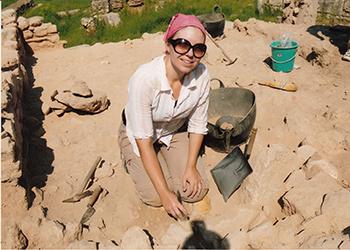 Email
Email
Fotini Kondyli is Associate Professor of Byzantine Art and Archaeology. Her research interests include Byzantine and Frankish spatial practices, community building processes and the material culture of Byzantine non-elites. She also works on cultural, economic, and political networks in the Eastern Mediterranean in the Late Byzantine period (13th- 15th c.). She is the author of Rural Communities in Late Byzantium, Resilience and Vulnerability in the Northern Aegean (2022) and coeditor of The Byzantine Neighbourhood. Urban Space and Political Action (2022).
As an active field archaeologist, Kondyli has worked in numerous archaeological sites in Greece, Albania, Turkey, the United Kingdom, and Germany. She is currently involved in archaeological projects at Athens, Thebes, northern Attica, and Samothrace. Her fieldwork at Athens and Thebes are part of her new research project on Byzantine city-making processes and the role of non-elites as city-makers. Bringing together legacy data from old excavations and newly excavated sites, Kondyli works on reconstructing parts of Athens and Thebes' spatial layout and architecture in the Middle and Late Byzantine/Frankish periods and explore the variety of activities and lived experiences in these cities. She is also employing 3D modelling and Virtual Reality tools to visualize the cities’ changes through time and communicate her research results to a wider audience in new and interactive ways.
Kondyli has held fellowships at the Dumbarton Oaks Research Library and Collection (Junior Fellow 2008-2009; Summer Fellow 2016) and at the Joukowsky Institute for Archaeology and the Old World at Brown University (2012-2014). She has also been the recipient of the American Institute for Archaeology Colburn Fellowship (2014-2015), an NEH research fellowship (2018) and she is currently named NEH Horace W. Goldsmith Distinguished Teaching Professor for 2021-23.
At UVA, Kondyli teaches courses on Late Antique and Byzantine art and material culture, on household archaeology, on pre-modern urbanism and sacred landscapes as well as on cross-cultural artistic and economic interaction in the Medieval Mediterranean. She also routinely takes students with her in the field and involve select students in her research.
Lawrence O. Goedde
Professor, Art History
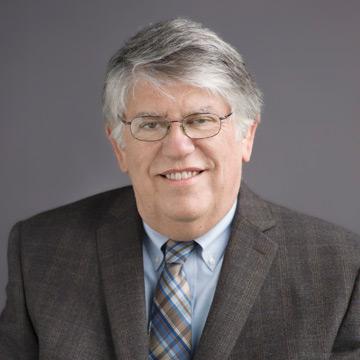 Email
EmailLarry Goedde is Professor of Art History in the McIntire Department of Art at the University of Virginia. He joined the faculty in 1981 as an Acting Assistant Professor and served as department Chair for a total of nineteen years. During his terms as Chair, he oversaw the department’s participation in planning the renovation of FayerweatherHall for Art History and the new building for Studio Art, Ruffin Hall, and represented the department during the construction phase of each project.
His research interests have focused on landscape and marine painting in the historical Netherlands during the sixteenth and seventeenth centuries and on still life painting as well. His work on these genres has tended to emphasize issues of interpretive method, particularly as it pertains to understanding iconographic change and the relationship between works of art and contexts of significant historical, social, and cultural change, such as the phenomenal success of Dutch sea faring in the seventeenth century or the so-called Little Ice Age of the same era.
Larry’s publications include Tempest and Shipwreck in Dutch and Flemish Art: Convention, Rhetoric, and Interpretation (Penn State Press, 1989), and more recently an essay surveying Renaissance and Baroque landscape traditions in A Companion to Renaissance and Baroque Art (London: Wiley-Blackwell, 2013). Publications on marine painting include an essay, “Natural Metaphors and Naturalism in Netherlandish Marine Painting,” in the exhibition catalogue Turmoil and Tranquility: The Sea Through the Eyes of Dutch and Flemish Masters, 1550-1700, for the National Maritime Museum, Greenwich, in 2008; and the essay “Les différentes manières de suggérer l’inhumanitédes catastrophes en mer: tempêtes et naufrages dans la peinture flamande de l’âge d’or,” in the catalogue to the exhibition La Flandre et la mer: de Pieter l’Ancien à Jan Brueghel de Velours at the Musée de Flandre in Cassel, France (2015).
Other essays include “Bethlehem in the Snow and Holland on the Ice: Climatic Change and the Invention of the Winter Landscape, 1560-1620,” in KulturelleKonsequenzen der “Kleinen Eiszeit” (2005); and "A Little World Made Cunningly: Dutch Still Life and Ekphrasis,” in Still Lifes of the Golden Age: Northern European Paintings from the Heinz Family Collection, National Gallery of Art, 1989.
Recent exhibitions include, for the Fralin Art Museum at UVA, “Traces of the Hand: Master Drawings from the Collection of Frederick and Lucy S. Herman” (2014); and, for the Gibbes Art Museum, Charleston, SC, "Charleston Collects: Devotion and Fantasy, Witchcraft and the World's End," drawn from the private collection of a UVA alumnus (2020).
Larry did his undergraduate work at Washington University in St. Louis, and his MA and PhD at Columbia University. At UVA he regularly teaches courses on Italian, Spanish, and French Baroque art and architecture, as well as courses on Dutch and Flemish art of the seventeenth-century and on Northern Renaissance painting, printmaking, and sculpture. He also works closely with the Fralin Art Museum on its collections of works on paper, and teaches graduate and undergraduate seminars on the history and connoisseurship of prints and drawings using the museum’s collections.
Douglas Fordham
Professor, Department Chair, Art History
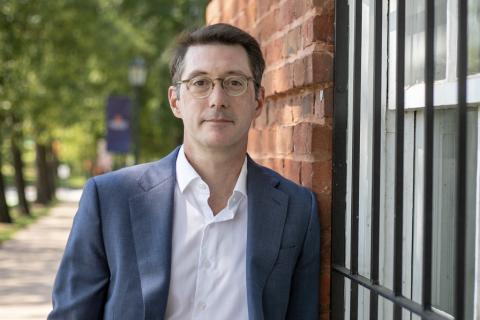 Email
Email
Office hours: Monday 2:00-3:00pm Fayerweather 207
The History of Art, as it has taken shape over the past three centuries, has been profoundly shaped by legacies of empire and enlightenment. As a historian of art and the British empire, Douglas Fordham is interested in a wide array of visual art from the seventeenth century to the present in the Anglophone world. He is a co-editor with Tim Barringer and Geoff Quilley of Art and the British Empire (2007), which helped to place empire at the center of the study of British art. His first monograph, British Art and the Seven Years' War: Allegiance and Autonomy (2010) examined the relationship of imperial politics to artistic organization in eighteenth-century London. His second monograph, Aquatint Worlds: Travel, Print, and Empire (2019) considered how the newly discovered medium of aquatint printmaking conditioned the representation of cultures beyond Europe circa 1800. Douglas has worked with the Fralin Museum of Art and the Kluge-Ruhe Collection of Aboriginal Art on a number of exhibitions including Boomalli Prints & Paper: Making Space as an Art Collective (2022). Ongoing research includes graffiti in the print record, icons in the enlightenment, and indigenous printmaking.
Douglas welcomes inquiries from prospective PhD students relating to any aspect of British art, the imperial world in which operated, and the indigenous artistic traditions that persisted within it.
Daniel Ehnbom
Professor Emeritus
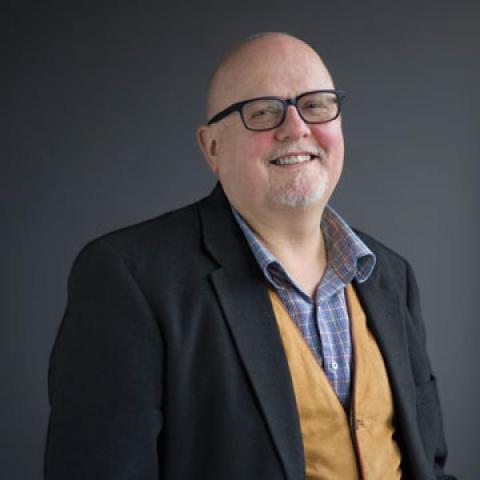 Email
EmailDaniel Ehnbom is the author of Indian Miniatures: The Ehrenfeld Collection (1985), articles on painting and Indian architecture, and contributions to various exhibition catalogues. He was with the Macmillan/Grove Dictionary of Art (1996) in London as a contributor and consultant from 1984 and as South Asia Area Editor for Painting and Sculpture from 1988. His recent publications include Realms of Earth and Sky: Indian Painting from the Fifteenth to the Nineteenth Century (Charlottesville: The Fralin Art Museum at the University of Virginia, 2014) with contributions by Krista Gulbransen, and the essay "Masters of the Dispersed Bhagavata Purana", in Milo C. Beach; Eberhard Fischer, B.N. Goswamy, eds, Masters of Indian Painting: 1100-1900 (Zürich: Artibus Asiae Publishers, Supplementum 48, I/II, 2011), volume 1, pp. 77-88.
Mr. Ehnbom teaches undergraduate survey lecture courses on Indian and Buddhist art, and upper level undergraduate lecture courses and undergraduate and graduate seminars in specialized topics including 16th-century Indian painting; early Indian sculpture and architecture; and architecture, sculpture, and painting of the Gupta Period. He is adjunct curator of South Asian art at the University of Virginia Art Museum, and Director of the UVA Center for South Asian Studies. He has held fellowships from Fulbright, the American Institute of Indian Studies, the American Council of Learned Societies, the Weedon Foundation, the UVA Shannon Center, and the UVA Teaching Technology Initiative project.
Sarah Betzer
Professor, Art History
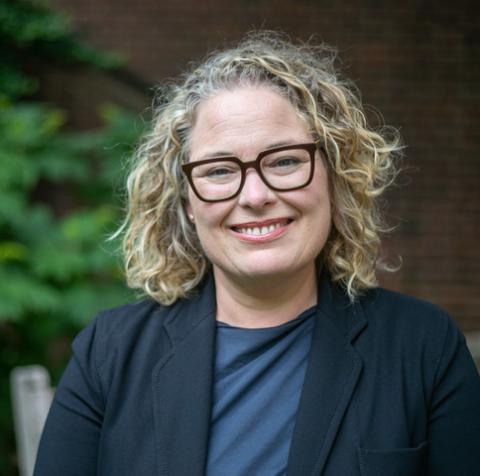 Personal Website
Email
Personal Website
Email
A specialist of modern European art and art historical theory and methods, Sarah Betzer's teaching, research, and graduate supervision is shaped by an orientation to the intersections of art theoretical debates and artistic process; the enduring power of the classical past; and the dynamics of gendered and sexed bodies in representation.
Her recently published book, Animating the Antique: Sculptural Encounter in the Age of Aesthetic Theory (Penn State University Press, 2021), explores the ramifications of the birth of aesthetic theory in the decades around 1750, when a distinctively eighteenth-century way of conceiving the antique emerged, one that had significant echoes throughout the nineteenth century: in the making and beholding of modern art, the articulations of art theory, and the writing of art history. Moving across Rome, Florence, Naples, London, Dresden, and Paris, the book explores the Janus-faced nature of encounters with the antique, whereby sculptures and beholders alike were caught between the promise of animation and the threat of mortification.
Her first book, Ingres and the Studio: Women, Painting, History (Penn State University Press, 2012), focused on J.-A.-D. Ingres, a critical figure of the modern era and an artist celebrated in his lifetime and beyond as one of the most esteemed portraitists of all time. Ingres and the Studio situated this essential aspect of Ingres's oeuvre in the context of his studio practice and his training of students, positing that female portraiture functioned for these artists as a privileged model of ambitious painting itself.
Having completed degrees at Wellesley College (BA), the Courtauld Institute (MA), and Northwestern University (PhD), Betzer joined the University of Virginia faculty in 2007. In addition to teaching in the undergraduate and graduate curricula in art history, between 2016 and 2021 Betzer served as inaugural Co-Director of the College Fellows Program and Engagements Curriculum–fundamental elements of UVA's first broad-scale reimagination of the place of the liberal arts in the undergraduate experience in over forty years.
Betzer is the recipient of grants from the Institute for Advanced Study in Princeton, the Center for Advanced Study in the Visual Arts, the Kress Foundation, the Howard Foundation, and the Getty Research Institute. In 2019 she was the Thomas Jefferson Fellow at Downing College, Cambridge. She served as the Chair of the Editorial Board for The Art Bulletin, and her articles and reviews have appeared in Art History, The Art Bulletin, the Oxford Art Journal, Art Journal, Sculpture Journal, and The Burlington Magazine. In 2021-22 she served as Interim Chair of the Department of Art. She is currently Associate Dean for Arts & Humanities at UVA.
William Wylie
Commonwealth Professor of Art
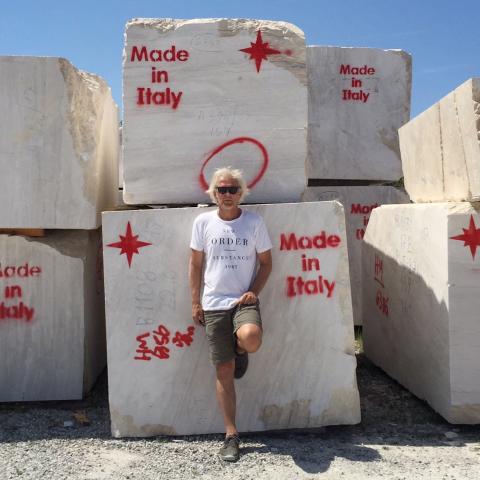 Personal Website
Email
Personal Website
EmailWilliam Wylie works in a variety of media with a focus in photography and video. He completed his MFA at The University of Michigan and came to UVA in 2000. He received a Mead Honored Faculty Award at UVA in 2003. He has been the director of the Study Abroad Program in Italy since 2007 and teaches the photography courses there in conjunction with an art history course most summers.
Wylie has published six books of his photographs, Riverwalk (University Press of Colorado, 2000), Stillwater (Nazraeli Press, 2002), Carrara (Center for American Places, 2009), Route 36 (Flood Editions, 2010) and Pompeii Archive (Yale University Press, 2018), and A Prairie Season, (Flood Editions, 2020). His research is primarily concerned with recognizing how landscapes are transformed by a variety of forces, including but not limited to humans. His photographs and films have been shown both nationally and internationally, including 100 Great American Photographs at The Amon Carter Museum. Fort Worth, TX, Pompeii:Photographs and Fragments at Yale University Art Gallery, Route 36 at The Joslyn Art Museum, Omaha, NE and Visions du Reel, International Film Festival in Nyon, Switzerland.
Wylie received a Guggenheim Fellowship in photography in 2005, a VMFA Professional Fellowship for 2011 and was the Doran Artist in Residence in Italy through the Sol LeWitt Foundation and the Yale University Art Museum in 2012 and 2015. His work can be found in the permanent collections of the Metropolitan Museum of Art, National Gallery of Art, Smithsonian American Art Museum, The Philadelphia Museum of Art, Virginia Museum of Fine Art, and Yale University Art Museum, among others. He has been an Artist in Residence at the American Academy in Rome and the Center for Land Use Interpretation in Utah and has had numerous other university fellowships.
Elizabeth Schoyer
Assistant Professor, General Faculty, Studio Art
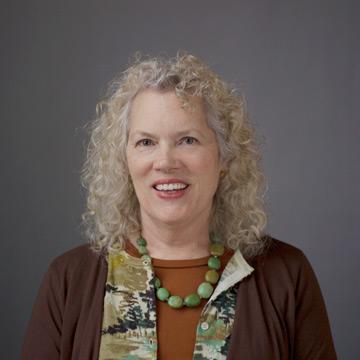 Personal Website
Email
Personal Website
EmailElizabeth Schoyer, born in Pittsburgh Pa., received her B.F.A. at the Philadelphia College of Art, and her M.F.A. from Indiana University in Bloomington. She teaches introductory and advanced drawing. Her methods of teaching focus on drawing as a language in which line, marks, space, shape etc. are used to create individual ways of seeing. Drawing provides the student with a myriad of possibilities for constructing images with a personal vision.
Elizabeth Schoyer’s own works are imaginary renderings of the experiences recounted in natural history journals, articles, and books from the 1700s to the present. Her work is represented by the Blue Print Gallery in Dallas, Texas.
George Sampson
Associate Professor, Arts Administration
 Email
EmailGeorge Sampson has administered arts organizations, presented arts events, curated art exhibitions and managed artists' careers since 1967. He has worked in the for-profit and non-profit sectors as a student, a paid professional, and as a volunteer leader on various Boards and committees. From 1986 to 1994 he led or co-led professional companies in New Mexico in the fields of ballet & modern dance, symphonic & chamber music, and jazz presentation. In the mid-'80s in New York, he served as associate director of a Native American art gallery, worked for Lincoln Center's Out of Doors Festival, for the Outward Visions music management company, for Robert Wilson's Byrd Hoffman Foundation, the Kool Jazz Festival and others. In the preceding two decades he worked in the presentation of concerts by dozens of top jazz, blues, folk and rock artists, from Maine to Florida to California.
Hired in 1994 by the University of Virginia to be Director of Development for the Arts, he served as catalyst for the Arts Grounds, a $200 million project to construct, renovate or expand 9 buildings for the arts, and also managed the Council for the Arts, the University's leading arts volunteers. By 2005, approximately $45 million for the Arts Grounds had been raised from private sources and another $14 million secured from public funds resulting in the successful completion (by fall, 2008) of 3 building projects.
Beginning in 2005 Mr. Sampson was asked to launch an initiative in Arts Administration which evolved into a full-time teaching assignment. These courses have resulted in a business case on the branding and stewardship of artistic intellectual property, published by the Darden School (September, 2008).
Mr. Sampson teaches a fall semester introductory lecture course called Principles and Practices of Arts Administration, and a spring semester second-level introductory course, The Arts in Context, whose contextual topic changes. His seminars on Arts Marketing and Development are designed for more advanced Arts Administration students.
Akemi Ohira
Associate Professor, Studio Art
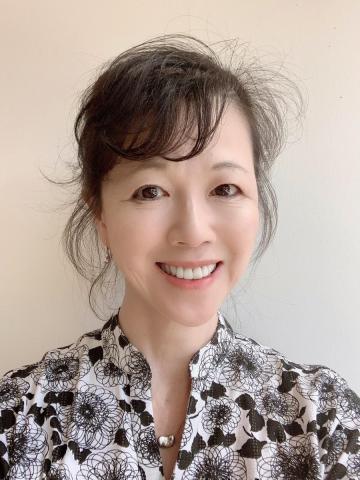 Personal Website
Email
Personal Website
EmailAkemi Ohira received her B.F.A. from Cornell University, and her M.F.A. from Carnegie Mellon University. She joined the faculty of the McIntire Department of Art in the fall of 1993, and has since regularly taught introductory, intermediate and advanced printmaking, as well as directed projects for the Distinguished Majors Program. Her work has been featured in solo and group exhibitions throughout the U.S., as well as in Japan.
Megan Marlatt
Professor, Studio Art
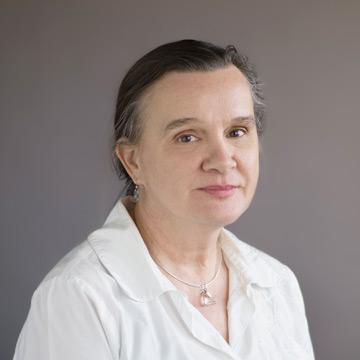 Email
EmailMegan Marlatt is an artist with an extensive background in painting whose work has expanded over the last three years into mask making and performance. This expansion is largely due to her work as founder and director of the artist collective “The Big Head Brigade”. The Brigade has its own separate website at www.bigheadbrigade.com, and can also be found under the “Links” section of this website.
On this website, selected pieces of Marlatt’s big heads can be viewed under “The Big Heads” tab, along with paintings and drawings incorporating her big heads as theatrical painting props.
Marlatt’s paintings and drawings can be found under “Works on Paper” and “Paintings from 2004-2012”. You will find a 4 year long, 40 ft drawing sketched on a 3 inch high cashier’s paper tape under “The Drawing Roll” and selected public art works, including parking lot paintings one can see from Google Earth, and classical fresco murals under “Public Art & Murals.”
Kevin Everson
Director of Studio Art Program
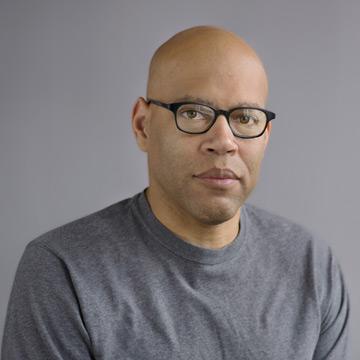 Email
EmailArtist/Filmmaker Kevin Jerome Everson was born and raised in Mansfield Ohio. He has a MFA from Ohio University and a BFA from the University of Akron. He is currently a Professor of Art at the University of Virginia in Charlottesville Virginia. He has made eight feature length films and over one-hundred and twenty short films, including such award winning films as Park Lanes (2015)The Island of Saint Matthews (2013), Erie (2010), Quality Control (2011), Ten Five in the Grass (2012), Cinnamon (2006), Spicebush (2005), Stone, Pictures From Dorothy (2004), Century (2013), Fe26 (2014), Sound That (2014), Sugarcoated Arsenic (2013) with Claudrena Harold and Emergency Needs (2007). Most recently he has presented the eight-hour long film, Park Lanes (2015). He also has a DVD box set of his films called Broad Daylight and Other Times with a catalog distributed by Video Data Bank.
Everson's films and artwork have been widely shown, at venues including Sundance Film Festival, Berlin Film Festival, International Film Festival Rotterdam, Oberhausen Film Festival, Toronto International Film Festival, New York Film Festival, The Museum of Modern Art in New York, the Whitney Museum of American Art in New York, Whitechapel Gallery in London, National Gallery in Washington DC and Centre Pompidou in Paris. The work has also been recognized through awards and fellowships, including a Guggenheim Fellowship, an Alpert Award, a Creative Capital Fellowship, an NEA Fellowship, NEH Fellowships, Ohio Arts Council Fellowships, and an American Academy in Rome Prize.
Dean Dass
Professor Emeritus
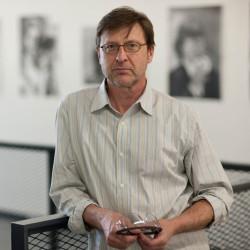 Email
EmailDean Dass studied art, philosophy and anthropology at the University of Northern Iowa, B.A. 1978. His M.F.A. is from The Tyler School of Art, Temple University, Philadelphia, 1980.
He has taught at the University of Virginia since 1985. For almost thirty years Dass have exhibited his works on paper, paintings, artist's books and sculpture throughout the United States and abroad. Early in his career, in the 1980s, he was invited to participate in three National Print Invitational Exhibitions at the Brooklyn Museum of Art (1981, 1983, 1989). His works have also been included in various juried or invitational exhibitions in museums in Poland (1980, 1997), Brazil (1986), England (1990), Finland (1990, 1996, 2003, 2008), the Netherlands (1993), Egypt (2005), as well as in many university and private galleries here and abroad. During the late '80s and early '90s Dass showed with the Dolan/Maxwell Gallery in Philadelphia and New York. Since the early '90s Dass has shown with the Schmidt Dean Gallery in Philadelphia. Since the mid-90s he has developed a special relationship in Scandinavia and have exhibited his work in Sweden and Finland. In Finland especially he has developed an ongoing exhibition and workshop schedule. He has had two solo exhibitions and been a part of several group exhibitions at Galleria Harmonia, a state-run graphic workshop and gallery affiliated with the Jyväskylä Art Museum. He has also lectured and conducted workshops at South Carelia Polytechnic University, Imatra, and at the Fine Arts Academy in Helsinki. He have exhibited three times in the international triennial exhibition Graphica Creativa, Jyväskylä, winning a Juror's Prize in 1996; this prize lead to subsequent exhibition opportunities in Finland, Sweden and Poland. A number of these exhibitions have included his artist's books.
Dass has received an Individual Fellowship from the State of Pennsylvania Arts Council (1985), the State of Virginia Commission for the Arts Printmaking Prize (1988), the State of Virginia Commission for the Arts Individual Fellowship (1994), the Virginia Museum of Fine Arts Individual Fellowship (1999), as well as several research grants from the University of Virginia (1989, 2002, 2005, 2006, 2007, 2008, 2010, 2012). The University of Virginia has also supported his creative work with Fellowships to study and exhibit abroad for extended periods (Netherlands in 1993, Finland in 1997, 2001, Ireland in 2009). In 2007 Dass received a Sesquicentennial Research Fellowship from the University of Virginia that enabled him to work and travel for one month in Imatra and two months in Paris. In 2003 Dass received the All-University Teaching Award at the University of Virginia. He was the only candidate for this award nominated by students.
Federico Cuatlacuatl
Assistant Professor, Studio Art
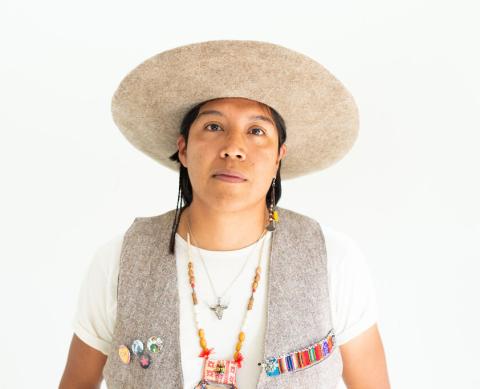 Email
Email
Federico Cuatlacuatl is an artist born in San Francisco Coapan, Cholula, Puebla, Mexico. Federico's work is invested in disseminating topics of Nahua indigenous immigration, social art practice, and cultural sustainability. Building from his own experience growing up as an undocumented immigrant and previously holding DACA (Deferred Action for Childhood Arrivals), Federico’s creative practice centers on the intersectionality of indigeneity and immigration under a pressing Anthropocene. At the core of his most recent research and artistic production is the intersection of transborder indigeneity, migrant indigenous diasporas, and Nahua futurisms. Federico’s independent productions have been screened in various national and international film festivals as well as exhibitions in museums and galleries worldwide. As founder and director of the Rasquache Artist Residency in Puebla, Mexico, he actively stays involved in socially engaged works and binational endeavors.
Amy Chan
Associate Professor, Studio Art
 Email
EmailAmy Chan teaches drawing and foundational courses that cultivate discipline, observation, critique and risk taking in art.
Chan is an abstract painter whose work can be found in the collections of the Rhode Island School of Design Museum, The Spencer Museum of Art and Capital One. She has received grants from the Pollock Krasner Foundation and the Virginia Commission for the Arts. She received her BFA from Rhode Island School of Design in 2000 and her MFA from Virginia Commonwealth University in 2008.
Dan Weiss
Visual Resources Center
 Email
EmailDan concentrated on Dutch Baroque Art and Cartography while an undergraduate at Mary Washington College (now the University of Mary Washington) and switched to Classical Art and Archaeology upon entering the University of Virginia. He has excavated in Morgantina, Sicily and at the Roman fort of Porolissum in Salǎj, Romania. His primary research interests are geography and the Roman/Barbarian interaction along the frontier, focusing on sites in Romania and Bulgaria. Having written his Master's Thesis on the Stoic content of Trajanic Sculpture, he wrote his dissertation on the areas of operation and influence in the northwestern Dacian limes. He has presented his research in the United States, Germany, Croatia, Bulgaria and Romania - part of which has been published in BAR-IS 2236 The Roman Empire and Beyond: Archaeological and Historical Research on the Romans and Native Cultures in Central Europe. He has also provided illustrations for numerous scholarly publications and children's picture books.
Dan is currently the Program Coordinator for the Charlottesville chapter of the Archaeological Institute of America. Current collaborations include a survey of archaeology and history in the Danube Valley with institutions from Wrocław, Poland and Zalău, Romania. Additional research involves issues of classical reception, folklore tradition, and post-colonial identity in the Carpathian region as expressed through contemporary music.
Dan has taught Art & War, Roman Art, Medieval Art, Art and War, and Art History Survey at the University of Virginia and Virginia Tech.
He is the Institutional Contact and Board Chair for the American Institute for Southeast European Studies (AISEES).
Abortion; accessible; accessibility; activism; anti-racism; antiracist; at risk; autism; barrier; bias; Black; clean energy; climate crisis; climate science; community; continuum; Covid-19; cultural differences; cultural heritage; DEI; disability; discrimination; disparity; diverse; diversity; equality; equity; elderly; environmental justice; ethnicity; evidence-based; female; feminism; fetus; fluoride; gay; gender; gender based; Gulf of Mexico; ideology; immigrants; implicit bias; inclusion; inequality; injustice; institutional; hate speech; Hispanic; Latinx; LGBT and LGBTQ; marginalized; marijuana; measles; mental health; minority; multicultural; Native American; obesity; opioids; oppression; peanut allergies; polarization; political; pollution; prejudice; privilege; promote; pronoun; pronouns; prostitute; race; racial identity; racism; science-based; segregation; sex; social justice; stereotypes; transgender; trauma; traumatic; unconscious bias; underprivileged; underrepresented; vaccines; victims; woman; women
Victoria Valdes
3D Print Lab Manager
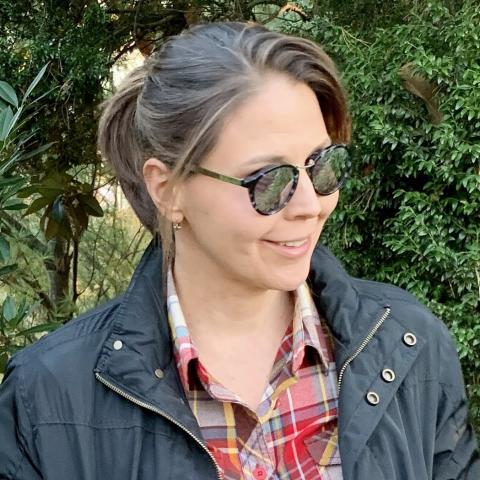 Email
EmailVictoria Valdes is the lab manager of the 3D design lab in Ruffin Hall. She received her master’s degree in art history from UVA in 2012 and began work for the Department of Art as a translator and database manager shortly thereafter. In 2015 she was promoted to Assistant Director of the Visual Resources Center. During her time at the VRC, Victoria created a full-service 3D modeling program for the department. Her software and modeling expertise includes Rhino 3D, Blender, Maya, Agisoft Metashape and handheld laser scanning tools. The success of the 3D printing initiative has led to collaborations with scholars at Jamestown, Monticello, Fluvanna Historical Society, and Dumbarton Oaks. Victoria has also collaborated with UVA departments including Architecture, Drama, Engineering, Archaeology, and the Fine and Decorative Arts commission.
Eric Schmidt
Gallery and Studio Technician
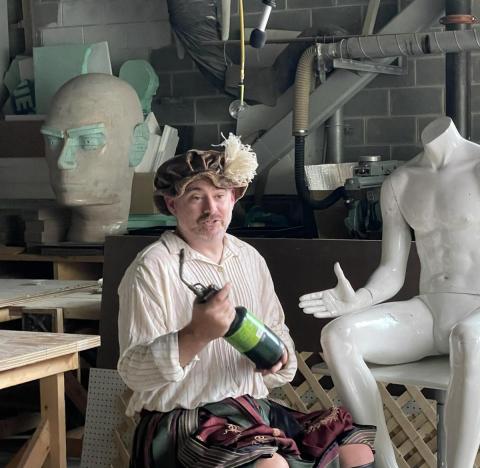 Email
EmailEric Schmidt, Ruffin Gallery and Studio Technician, has been with the Art Department for 22 years. He holds a BFA with a concentration in painting for UNC-Chapel Hill. Eric creates and implements safety procedures in the art studio and galleries; advises students on the appropriate use of tools and machinery in the wood and metal shops; works with faculty, staff and students on usage, storage, and disposal of chemicals used in studios; maintains the studios, galleries, and Ruffin Hall building in general, which includes supply maintenance, general condition maintenance including making repairs, and oversight of exhibition installation and coordination with exhibitors. He coordinates with UVA Environmental Health and Safety and Facilities Management with building safety, chemical usage, and repair issues.
Laura Mellusi
Business Manager
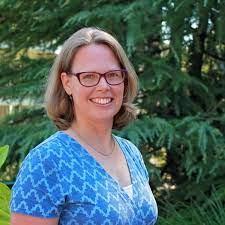 Email
EmailLaura Mellusi, Finance and Administration Manager, has worked at UVA for over 15 years and in the Art Department since 2014. She is responsible for managing the Art Department’s overall operations, supervising most of the staff, and overseeing all financial and human resource plans and actions. Her financial duties include budget planning, financial accounting, and tracking incoming gifts, grants, and finding other funding resources. As the department human resources liaison, she manages faculty, staff, and student hiring and personnel related tasks. She is a collaborative partner with the Department Chair, Studio Program Director, Graduate Program Director and other Dean’s office leadership in accomplishing the art department’s long-term and short-term strategic goals. In addition to working closely with the Art Department faculty and staff, she supports several interdisciplinary programs including the Arts Administration Echols Major Advisor, Archaeology Program Director, and the Medieval Studies Program Director.
Francesca Fiorani
Commonwealth Professor of Art History
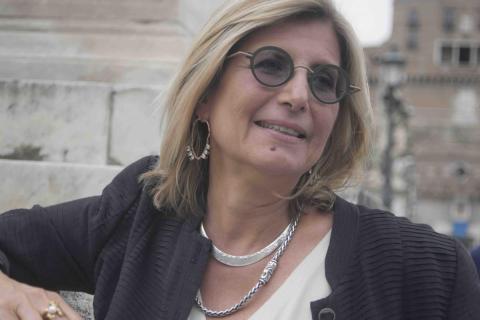 Personal Website
Email
Personal Website
Email
Francesca Fiorani writes, lectures and teaches on Renaissance art. The author of The Marvel of Maps. Art, Cartography and Politics in Renaissance Italy (2005), she is mainly interested in the intersections of art, science and technology in the early modern period. Her writings explore Renaissance practices that bridge between artists' training and university education, the visualization of knowledge, the status of images in Renaissance philosophy and art theory as well as the relations between science and religion.
In recent years Fiorani has focused her research on themes relating to observation, experience, optics and Leonardo da Vinci, especially his lifelong project of transferring his observations of the natural world from geometrical diagrams to paintings and drawings (and vice versa).
Fiorani is a keen explorer of the application of modern technology to art history. Combining her longstanding interest in art, science and technology with her current research on Leonardo da Vinci's optics, she created the digital publication Leonardo da Vinci and His Treatise on Painting. Published in 2012 and dedicated to the legacy of Leonardo da Vinci's art theory in Renaissance and Baroque Europe, this publication provides innovative research tools for visual and textual analysis. Graduate students in art history routinely collaborate to this ongoing project.
After completing her Ph.D. in Art History at the University of Rome "La Sapienza", she joined the Art Department at the University of Virginia, where she teaches graduate and undergraduate courses related to her research interests.
She is the recipient of honors and awards from numerous institutions, including the John Simon Guggenheim Memorial Foundation, the Harvard University Center for Italian Renaissance Studies at Villa I Tatti, Florence, the American Council for the Learned Societies, the Getty Center, the National Endowment for the Humanities, the Folger Institute, the John Carter Brown Library, the Herzog August Bibliothek, Wolfenbüttel, Germany, and the Warburg Institute , University of London.

